Jan. 27, 2019
Prelims Pointers
Jan. 27, 2019
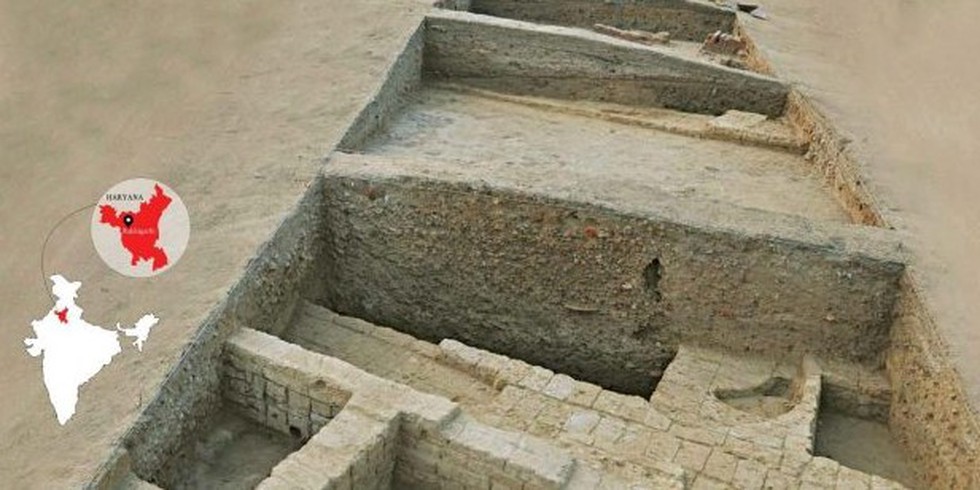
About:
- Location: It is a village in Hisar District of Haryana. The site is located in the Ghaggar-Hakra river plain, some 27 km from the seasonal Ghaggar river.
- Indus valley site:
- It is the site of a pre-Indus Valley Civilisation settlement going back to about 6500 BCE.
- Later, it was also part of the mature Indus Valley Civilisation, dating to 2600-1900 BCE.
- It is the largest ‘Indus Valley Civilization site’, twice the size of Mohenjo-daro, which is till now considered as the one of the two provincial capitals along with Harappa.
- It is the site of a pre-Indus Valley Civilisation settlement going back to about 6500 BCE.
- Endangered Heritage Sites: In May 2012, the Global Heritage Fund, declared Rakhigarhi one of the 10 most endangered heritage sites in Asia. It found out that the villagers sell the artefacts they dig out of the site and parts of site are now being encroached by private houses.
Prelims Pointers
Jan. 27, 2019
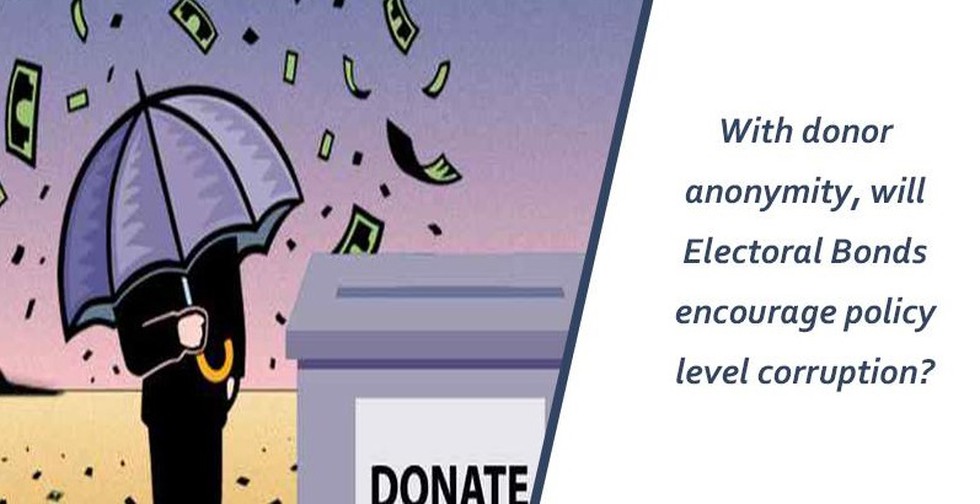
About:
- Electoral Bond is a financial instrument for making donations to political parties. The party can convert these bonds back into money via their bank accounts.
- Each political party would have to open designated accounts for this purpose, with banks mandated by the RBI.
Features of Electoral Bond Scheme 2018:
- Government of India notified the Electoral Bond Scheme 2018 in January 2018.
- As per provisions of the Scheme, Electoral Bonds may be purchased by a person, who is a citizen of India or incorporated or established in India. A person being an individual can buy Electoral Bonds, either singly or jointly with other individuals.
- Only the Political Parties registered under Section 29A of the Representation of the People Act, 1951 and which secured not less than one per cent of the votes polled in the last General Election to the Lok Sabha or the State Legislative Assembly, shall be eligible to receive the Electoral Bonds.
- The Electoral Bonds shall be encashed by an eligible Political Party only through a Bank account with the Authorized Bank.
- It may be noted that Electoral Bonds shall be valid for 15 calendar days from the date of issue and no payment shall be made to any payee Political Party if the Electoral Bond is deposited after expiry of the validity period.
Debate:
- Arguments in favour: It will lead to greater transparency and accountability in political funding, while preventing future generation of black money as any payments will be recorded by banks.
- Arguments against: While the identity of the donor is captured, it is not revealed to the party or public. So, transparency is not enhanced for the voter.
Prelims Pointers
Jan. 27, 2019
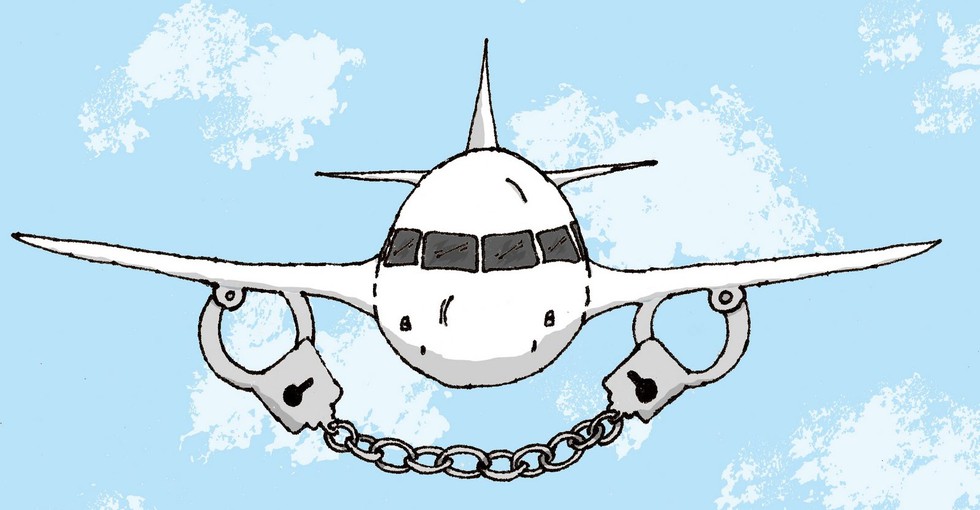
About:
- Meaning: Extradition is a process where one governmental authority formally returns an alleged criminal to another governmental authority for prosecution for a criminal charge. It is initiated when a person commits a crime in country and flees to another country.
- Extradition vs deportation: Unlike deportation, extradition is a judicial process. g. in India a request to extradite an accused can be initiated only after a chargesheet is filed before the court and the court seeks the presence of the accused to face trial.
- Procedure in India:
- India can make an extradition request to any country.
- India’s treaty partners have treaty obligations to consider India’s requests.
- However, in the absence of a treaty, it is a matter for the foreign country to consider, in accordance with its domestic laws and procedures, whether the country can agree to India’s extradition request on the basis of an assurance of reciprocity.
- India can make an extradition request to any country.
- Present status:
- In India, the extradition of a fugitive from India to a foreign country or vice-versa is governed by the provisions of Indian Extradition Act, 1962.
- India has extradition treaties with 43 countries and extradition arrangements with 10 countries.
- In India, the extradition of a fugitive from India to a foreign country or vice-versa is governed by the provisions of Indian Extradition Act, 1962.
India-Australia extradition pact:
- India and Australia signed an extradition treaty in 2008, but it came into force only in 2011. The current extradition treaty is general in nature. But this renewed treaty will be more crime specific. It will focus on narcotics, human trafficking, spies and terrorism.
- India has extradited only two persons from Australia.
Prelims Pointers
Jan. 27, 2019
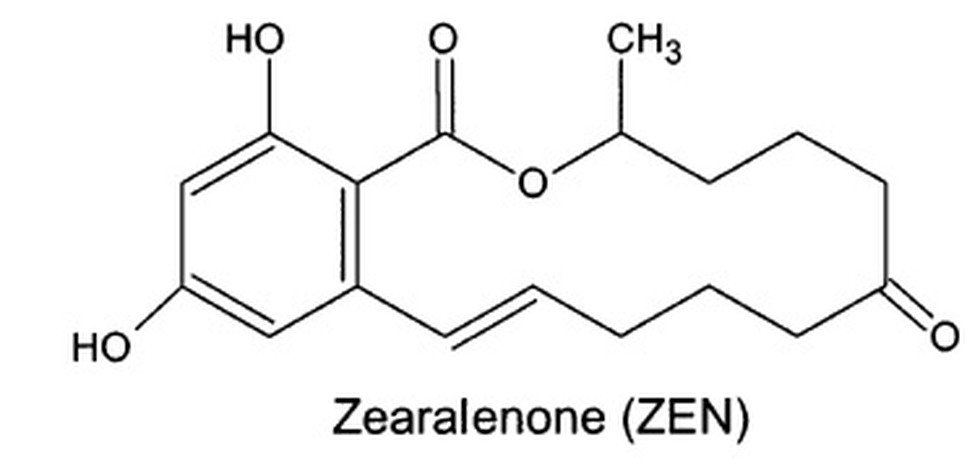
About:
- Zearalenone is a fungal toxin infesting cereals such as wheat, maize and barley. It attacks crops while they are growing, but can also develop when cereals are stored without being dried fully.
- Health concern:
- In zearalenone’s case, there is no strong evidence of toxicity in humans so far, though several research groups are investigating.
- As a result, the International Agency for Research on Cancer (IARC) classifies it as a Group 3 carcinogen, which means evidence is not sufficient for an evaluation yet.
- In zearalenone’s case, there is no strong evidence of toxicity in humans so far, though several research groups are investigating.
- Regulation in India: The Food Safety and Standards Authority of India (FSSAI) does not impose maximum limits for zearalenone, though the European Union (EU) does.
Recent Study:
- This month, researchers from Lucknow’s Indian Institute of Toxicology Research (IITR) published a study in the Journal of Food Science on presence of zearalenone in Uttar Pradesh markets.
- Findings: Zearalenone has been detected in wheat, rice, corn and oats from markets in Uttar Pradesh. The substance was found in 70 of the 117 samples tested. 24 of the U.P. samples exceeded the EU regulatory limits of 100-200 mcg/kg of cereals.
- Recommendation: India should set limits on zearalenone in cereals.
- Significance: While numerous studies document this toxin in cereals across the world, no data existed for India until now.
Prelims Pointers
Jan. 27, 2019
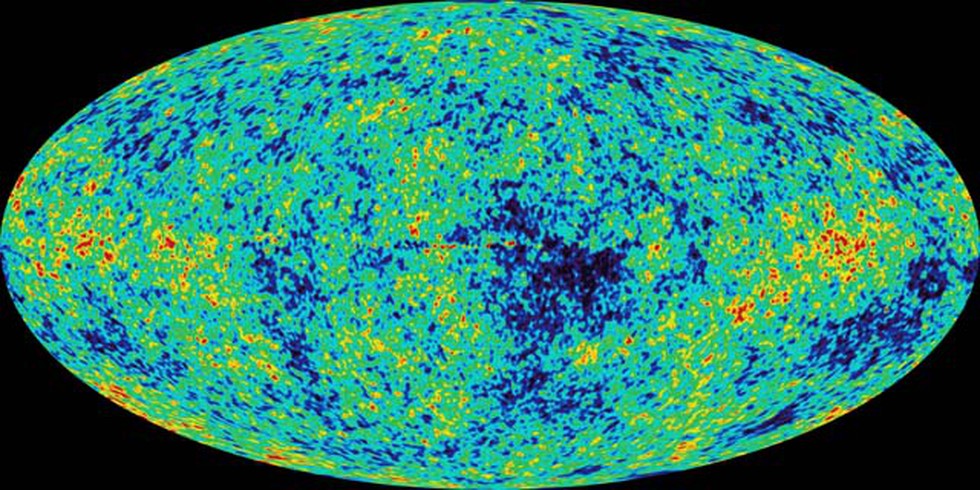
About:
- What is it? The cosmic microwave background (CMB) is a faint cosmic background radiation filling all space.
- Origins: It is thought to be leftover radiation/Heat from the Big Bang, or the time when the universe began. The universe began 13.8 billion years ago, and the CMB dates back to about 400,000 years after the Big Bang.
- Visibility: One can't see the CMB with naked eye, but it is everywhere in the universe. It is invisible to humans because it is so cold, just 2.725 degrees above absolute zero. Its radiation is most visible in the microwave part of the electromagnetic spectrum.
- Discovery: The accidental discovery of the CMB in 1964 by American radio astronomers Arno Penzias and Robert Wilson earned them the 1978 Nobel Prize in Physics.
- Significance: The CMB is useful to scientists because it helps us learn how the early universe was formed. It is at a uniform temperature with only small fluctuations visible. By studying these fluctuations, cosmologists can learn about the origin of galaxies.
- CMB-Bharat: CMB-Bharat is a proposal for comprehensive next generation Cosmic Microwave Background (CMB) mission in international collaboration with major Indian contribution so as to reveal the first clear signature of quantum gravity in the very early universe.
Prelims Pointers
Jan. 27, 2019
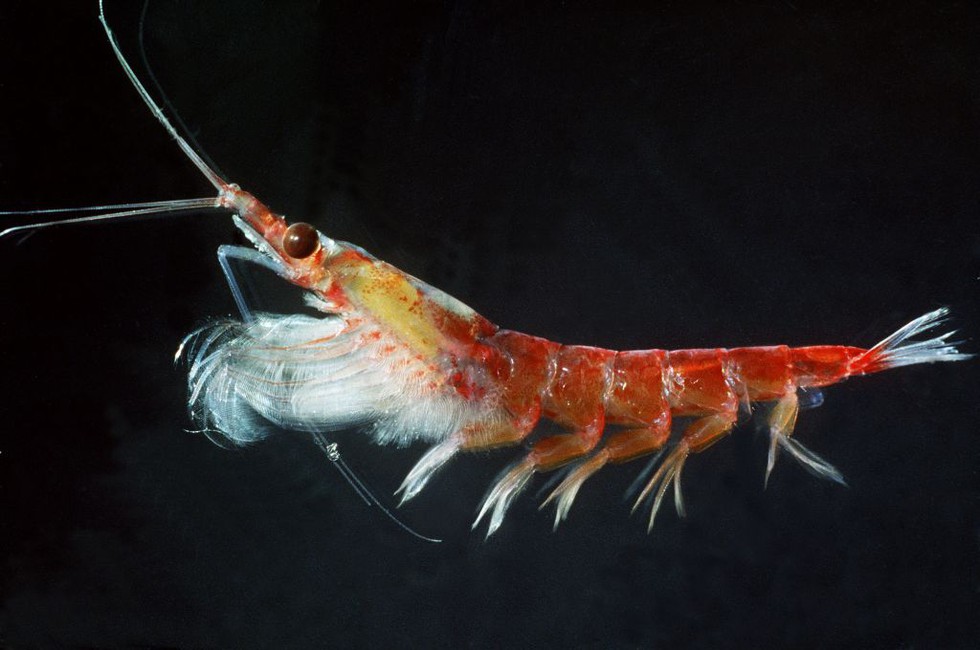
About:
- ‘Krill’ is a general term used to describe about 85 species of free-swimming, open-ocean crustaceans known as euphausiids.
- Antarctic krill:
- Pink and opaque, Antarctic krill (Euphausia superba) is one of the 85 species of krill that lives in the Southern Ocean.
- It is one of the most common species in its range and it is not at risk of endangerment or extinction. Thus, it has a least concern status by IUCN.
- During certain times of year, krill congregate in swarms so dense and widespread that they can be seen from space.
- Pink and opaque, Antarctic krill (Euphausia superba) is one of the 85 species of krill that lives in the Southern Ocean.
- Place in food chain:
- Krill feed on phytoplankton, microscopic, single-celled plants that drift near the ocean’s surface and live off carbon dioxide and the sun’s rays.
- They in turn are the main staple in the diets of literally hundreds of different animals, from fish, to birds, to baleen whales.
- Krill is also caught to make fishmeal or oil that is sold as a human health supplement.
- Krill feed on phytoplankton, microscopic, single-celled plants that drift near the ocean’s surface and live off carbon dioxide and the sun’s rays.
- Population: The British Antarctic Survey (BAS) reckons krill are among the most abundant creatures on Earth with an estimated total of 780 trillion, excluding larvae and eggs.
- Recent study: Waters in the southwest Atlantic, home to most krill, have warmed 1 degree Celsius over the past 90 years, and krill are concentrating into a narrowing band towards the coast of Antarctica.
Prelims Pointers
Jan. 27, 2019
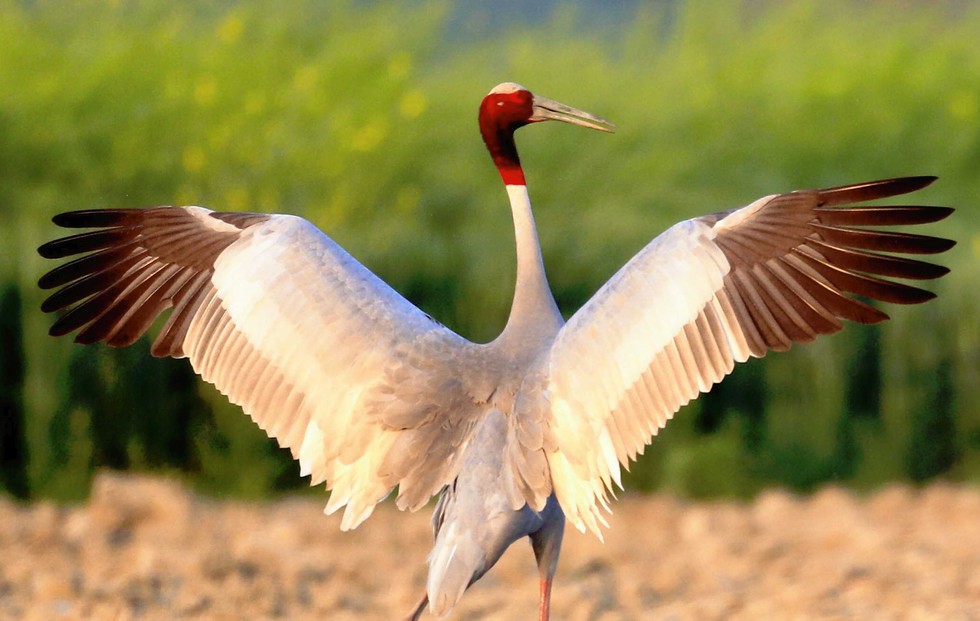
About:
- Scientific name: Grus Antigone.
- Distinguished features: Sarus crane is distinguishable by its red upper neck and white collar.
- Height: Towering at 152-156 cm, over 5 feet on average, it is the world’s tallest flying bird.
- Habitat: The Sarus habitat is outside protected areas, in natural wetlands with low water depth, marshy and fallow areas and agricultural fields.
- Distribution:
- The Sarus crane has three disjunct populations in the Indian sub-continent, south-east Asia and northern Australia with an estimated global population of 25,000-37,000 individuals.
- In the Indian subcontinent, it is found in northern and central India, Terai Nepal and Pakistan with an estimated population of 20,000, majority of which are in Uttar Pradesh.
- The Sarus crane has three disjunct populations in the Indian sub-continent, south-east Asia and northern Australia with an estimated global population of 25,000-37,000 individuals.
- Uttar Pradesh:
- It is the official State bird of Uttar Pradesh.
- Since 2013, the Sarus Crane Conservation Project has been running across Purvanchal by Wildlife Trust of India (WTI) in collaboration with the U.P. Forest Department.
- It is the official State bird of Uttar Pradesh.
- IUCN status: Vulnerable.
- Threats:
- As per the IUCN 2016 status, the Sarus crane population has decreased globally, owing to the degradation of wetlands, ingestion of pesticides, electrocution due to power transmission lines in agricultural areas and collection of eggs for medicinal purposes.
- In U.P., Change in the cropping pattern from paddy to sugarcane is another reason.
- As per the IUCN 2016 status, the Sarus crane population has decreased globally, owing to the degradation of wetlands, ingestion of pesticides, electrocution due to power transmission lines in agricultural areas and collection of eggs for medicinal purposes.
- Ecological Significance: They play a vital role in ecological balance by controlling the population of harmful insects and have significant cultural importance, while also being sociable.
Sarus Crane is India’s only resident breeding crane.
Prelims Pointers
Jan. 27, 2019
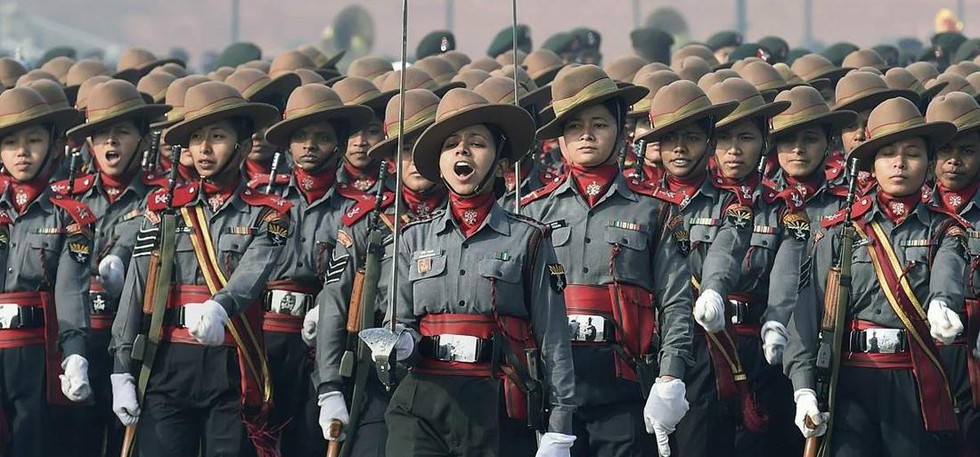
About:
- Background: Assam rifles is India’s oldest paramilitary force, raised originally in 1835 as Cachar Levy.
- Role: It’s two primary roles are conducting counter-insurgency operations in the Northeast and guarding the Indo-Myanmar border (as per the government policy ‘one border one force’).
- Also known as: Sentinels of the Northeast.
- HQ: Laitkor (Shillong).
- Motto: Friends of the Hill People.
- Parent bodies: While Assam Rifles functions under the Ministry of Defence, its administrative control is under the Ministry of Home Affairs.
Prelims Pointers
Jan. 27, 2019
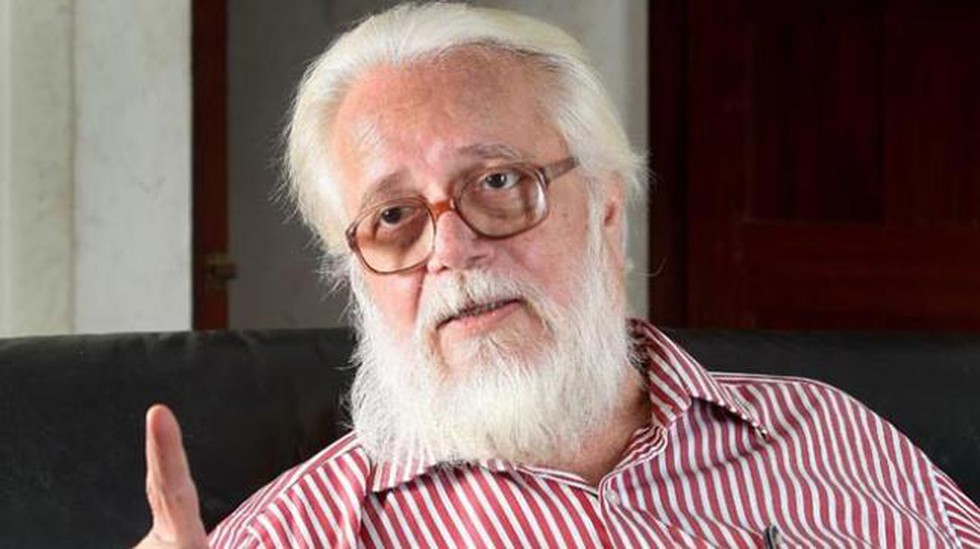
About:
- Career: Nambi Narayanan (born 1941) is an Indian scientist and aerospace engineer. At Indian Space Research Organisation (ISRO), he was in-charge of the cryogenics division.
- Espionage case:
- In 1994, he was falsely charged with espionage and arrested. The charges against him were dismissed by the CBI in 1996, and the Supreme Court of India declared him not guilty in 1998.
- In 2018, the Supreme Court awarded Narayanan a compensation of ₹50 lakh, to be recovered from the government of Kerala within eight weeks.
- It also constituted a committee headed by retired Supreme Court judge D. K. Jain to inquire into the role of the Kerala police in the arrest of Narayanan.
- In 1994, he was falsely charged with espionage and arrested. The charges against him were dismissed by the CBI in 1996, and the Supreme Court of India declared him not guilty in 1998.
- Autobiography: His autobiography titled Ormakalude Bhramanapatham was released in 2017, which deals with the ISRO espionage case in which he was subjected to repeated third degree and sustained interrogation by the Kerala Police.
- Awards: He was awarded Padma Bhushan in 2019.
Prelims Pointers
Jan. 27, 2019
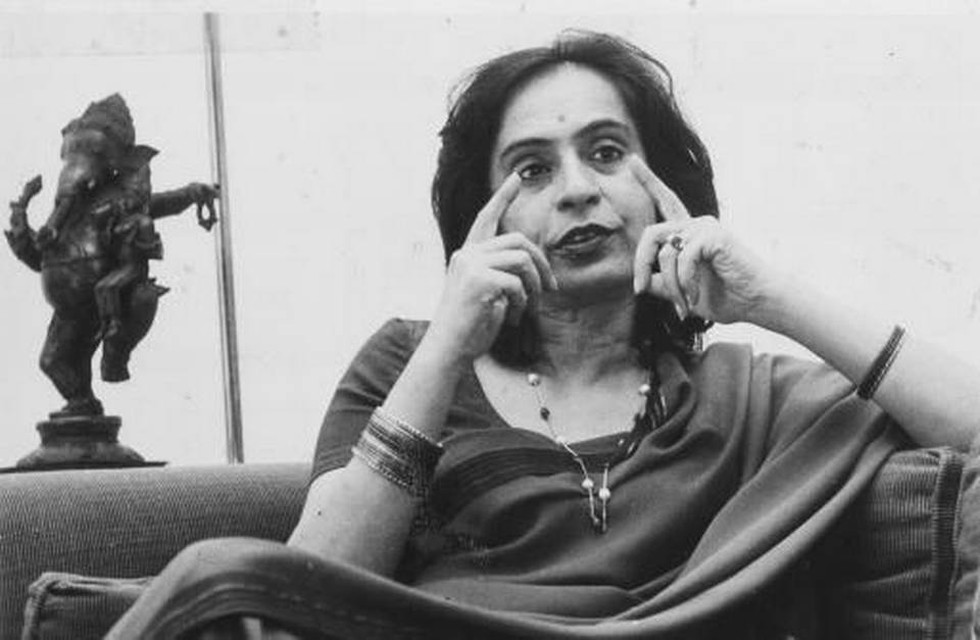
About:
- Books authored: A notes English writer, she has authored several books in English including, Karma Cola, Raj, A River Sutra, Snakes and Ladders: Glimpses of Modern India, and Eternal Ganesha: From Birth to Rebirth.
- Family: She is the daughter of Biju Patnaik, an Indian independence activist and former Chief Minister of Odisha. Her younger brother Naveen Patnaik has been the Chief Minister of Odisha since 2000.
- Awards: She was selected as one of the recipients of India's fourth highest civilian award the Padma Shri in 2019, for her contribution in the field of literature.
Jan. 26, 2019
Prelims Pointers
Jan. 26, 2019
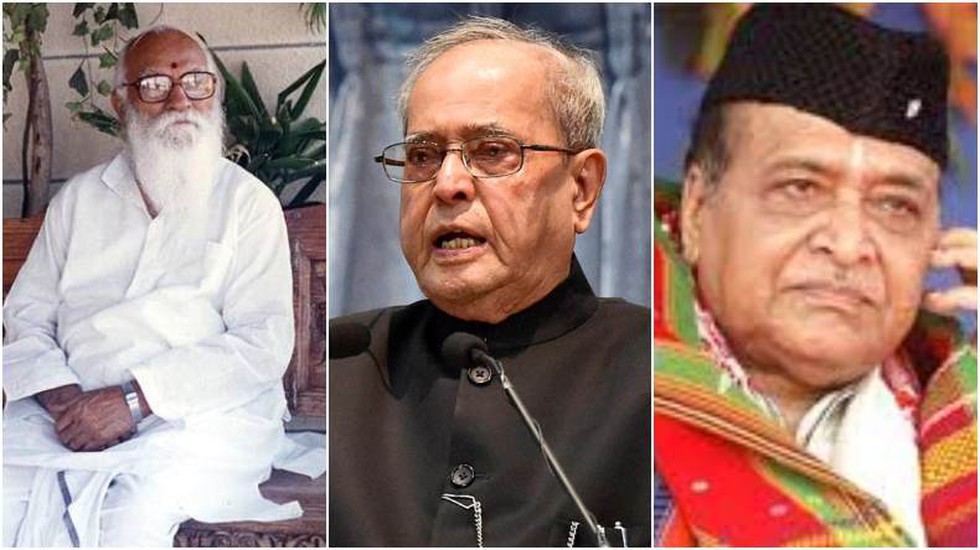
About:
- The Bharat Ratna is the highest civilian award of the Republic of India. Bharat Ratna recipients rank seventh in the Indian order of precedence.
- Instituted in: 1954. The first recipients of the Bharat Ratna were C. Rajagopalachari, Sarvepalli Radhakrishnan, and C. V. Raman, who were honoured in 1954.
- Criteria:
- The award is conferred in recognition of exceptional service/performance of the highest order in "any field of human endeavour".
- The award was originally limited to achievements in the arts, literature, science, and public services, but this was changed in 2011.
- The award is conferred in recognition of exceptional service/performance of the highest order in "any field of human endeavour".
- Eligibility:
- The award is conferred without distinction of race, occupation, position, or sex.
- Though usually conferred on India-born citizens, the Bharat Ratna has been awarded to one naturalised citizen, Mother Teresa, and to two non-Indians, Pakistan national Khan Abdul Ghaffar Khan and former South African President Nelson Mandela.
- The original statutes did not provide for posthumous awards but were amended in 1955 to permit them. Former Prime Minister Lal Bahadur Shastri became the first individual to be honoured posthumously.
- The award is conferred without distinction of race, occupation, position, or sex.
- Award Process: There is no formal nomination process. The recommendations for the award can only be made by the Prime Minister to the President.
- Limits: A maximum of three nominees can be awarded per year.
- Medal:
- Recipients receive a certificate signed by the President and a medal. There is no monetary grant associated with the award.
- The medal is in the shape of a peepal leaf rimmed in platinum. The sun burst design with rays spreading out, made of platinum, is embossed on the obverse side of the medal.
- The words "Bharat Ratna", in Devanagari Script, is inscribed on the obverse side.
- A State Emblem of India Is placed in the centre of the reverse side with the national motto, "Satyamev Jayate" (Truth alone triumphs) in Devanagari Script.
- Recipients receive a certificate signed by the President and a medal. There is no monetary grant associated with the award.
Recent winners:
- Pranab Mukherjee: He was the 13th President of India and served from 2012 until 2017. He was also finance minister under the prime ministership of Manmohan Singh.
- Nanaji Deshmukh:
- He had been a member of Rashtriya Swayamsevak Sangh (RSS). He is credited with bolstering the Jana Sangh in Uttar Pradesh.
- As a social activist, he laid emphasis on education. He established first Saraswati Shishu Mandir at Gorakhpur in 1950.
- He was a member of the Lok Sabha from 1977 to 1979 and served as a nominated member of the Rajya Sabha from 1999 to 2005.
- He had been a member of Rashtriya Swayamsevak Sangh (RSS). He is credited with bolstering the Jana Sangh in Uttar Pradesh.
- Bhupen Hazarika: He was a legendary singer-composer from Assam who died in 2011.
Prelims Pointers
Jan. 26, 2019
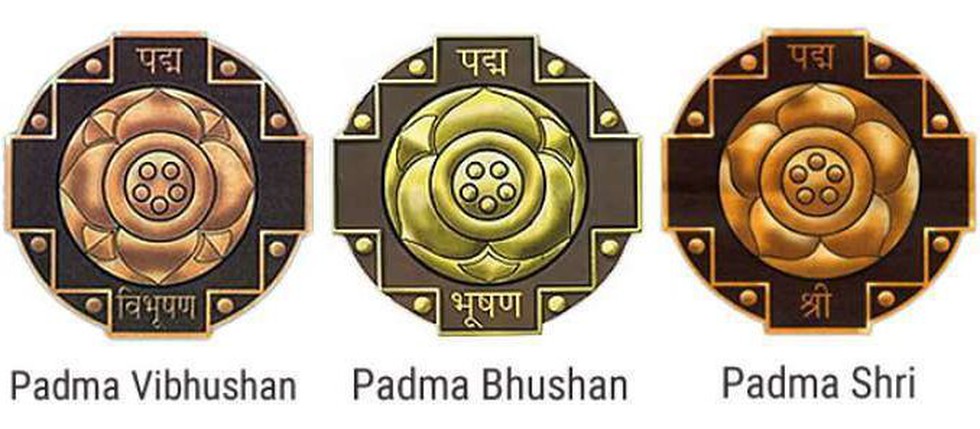
About:
- Padma Awards are one of the highest civilian Awards of the country conferred in three categories, namely –
- Padma Vibhushan: For Exceptional and distinguished service.
- Padma Bhushan: For Distinguished service of high order.
- Padma Shri: For distinguished service in any field.
- Padma Vibhushan: For Exceptional and distinguished service.
- Disciplines in which awarded: It is given for distinguished and exceptional achievements/service in all fields of activities/disciplines.
- Eligibility:
- All persons without distinction of race, occupation, position or sex are eligible for these awards.
- However, Government servants including those working with PSUs, except doctors and scientists, are not eligible for these Awards.
- All persons without distinction of race, occupation, position or sex are eligible for these awards.
- Award committee:
- The nomination process is open to the public. Even self-nomination can be made.
- All nominations received for Padma Awards are placed before the Padma Awards Committee headed by the Cabinet Secretary, which is constituted by the PM every year.
- The recommendations of the committee are submitted to the PM and the President for approval.
- The awardees are then presented a certificate and a medallion. The recipients are also given a small replica of the medallion, which they can wear during any ceremonial/State functions etc., if the awardees so desire.
- The nomination process is open to the public. Even self-nomination can be made.
- Clarification:
- The award does not amount to a title and cannot be used as a suffix or prefix to the awardees’ name.
- The total number of awards to be given in a year (excluding posthumous awards and to NRI/foreigners/OCIs) should not be more than 120.
- The award is normally not conferred posthumously. However, in highly deserving cases, the Government could consider giving an award posthumously.
- A higher category of Padma award can be conferred on a person only after a gap of five years. However, in highly deserving cases, a relaxation can be made by the Awards Committee.
- The award does not amount to a title and cannot be used as a suffix or prefix to the awardees’ name.
Full List of Padma Awardees: Kindly refer the link
https://www.thehindu.com/news/national/list-of-padma-awardees-2019/article26093285.ece
Prelims Pointers
Jan. 26, 2019
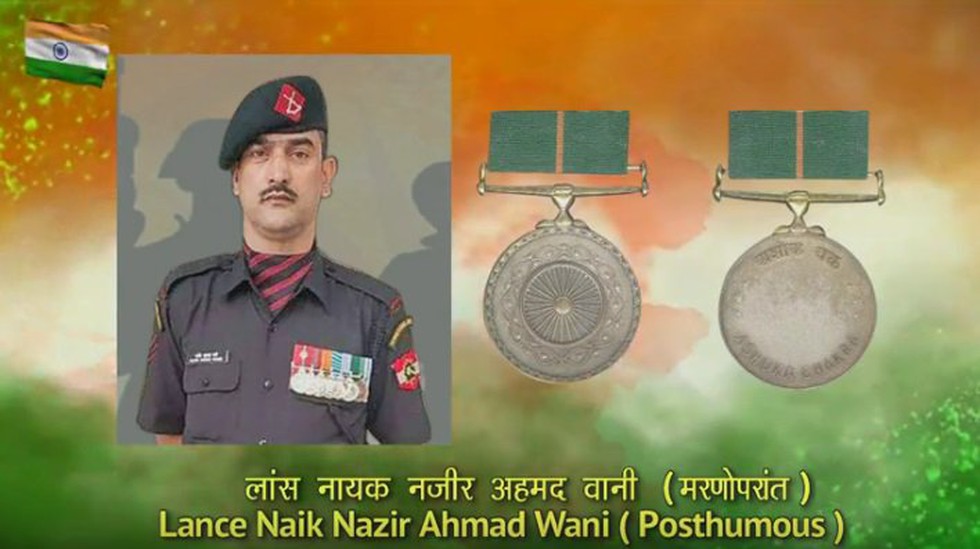
About:
- The awards include one Ashoka Chakra, 4 Kirti Chakras, 11 Shaurya Chakras, 28 Param Vishisht Seva Medals, 3 Uttam Yudh Seva Medals, 51 Ati Vishisht Seva Medals, one Bar to Yudh Seva Medal, 9 Yudh Seva Medals, two Bar to Vishisht Seva Medals.
Lance Naik Nazir Ahmad Wani:
- Lance Naik Nazir Ahmad Wani has been posthumously awarded ‘Ashok Chakra’, India’s highest peace time gallantry award for his role in a counter-insurgency operation in Kashmir last year.
- He is Kashmir’s first Ashok Chakra awardee and was also awarded Sena Medal for gallantry twice in 2007 and 2018 for his acts of valour.
Ashok chakra:
- It is India’s highest peace time gallantry award. It is the peacetime equivalent of the Param Vir Chakra.
- It is awarded for the "most conspicuous bravery or some daring or pre-eminent valour or self-sacrifice" other than in the face of the enemy.
- The decoration may be awarded either to military or civilian personnel.
Prelims Pointers
Jan. 26, 2019
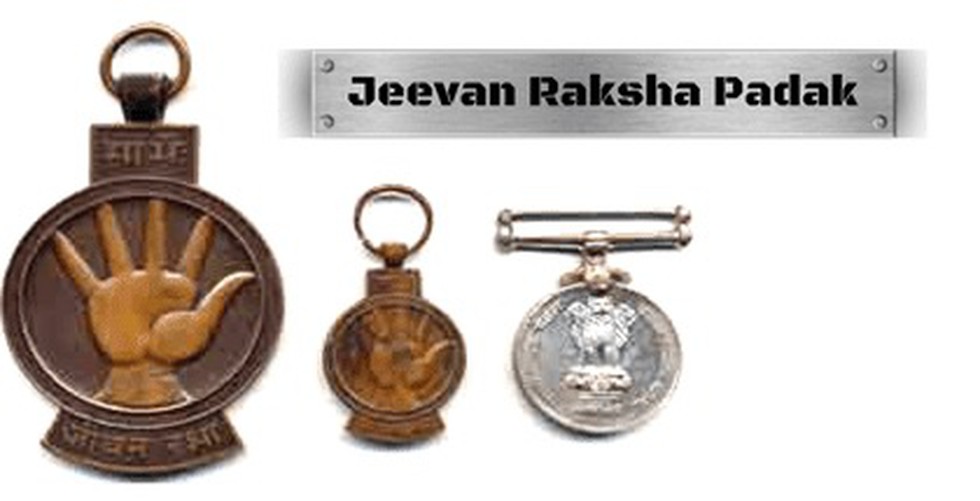
About:
- Objective: Jeevan Raksha Padak series of awards are given to a person for meritorious act of human nature in saving the life of a person.
- Categories: The award is given in three categories, namely,
- Sarvottam Jeevan Raksha Padak,
- Uttam Jeevan Raksha Padak and
- Jeevan Raksha Padak.
- Sarvottam Jeevan Raksha Padak,
- Eligibility: Persons of all walks of life are eligible for these awards. The award can also be conferred.
- Award ceremony: The decoration of the award (medal, certificate signed by the Union Home Minister and lump sum monetary allowance) is presented to the awardee in due course by the respective Union Ministries/Organizations/State Government to which the awardee belongs.
- Recent winners: This year, Sarvottam Jeevan Raksha Padak is being awarded to 8, Uttam Jeevan Raksha Padak to 15 and Jeevan Raksha Padak to 25 persons. 8 awards are posthumous.
Prelims Pointers
Jan. 26, 2019
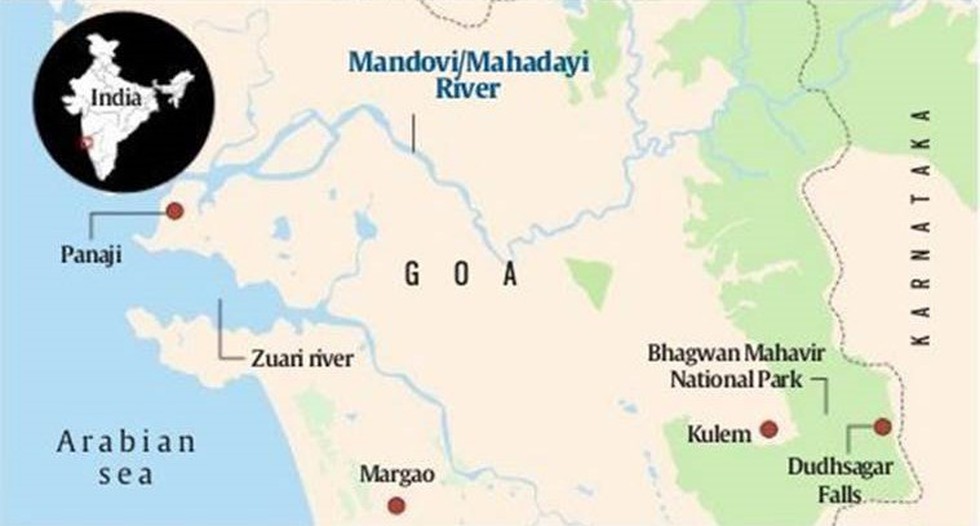
About:
- The Mahadayi/Mandovi River is described as the lifeline of the Indian state of Goa.
- It originates from a cluster of 30 springs at Bhimgad in the Western Ghats in the Belgaum district of Karnataka. Then it enters Goa and finally drains in Arabian sea.
- The Mandovi and the Zuari are the two primary rivers in the state of Goa.
- Mandovi joins with the Zuari at a common point at Cabo Aguada, forming the Mormugao harbour.
- The two rivers are linked by Cumbarjuem Canal.
- Mandovi joins with the Zuari at a common point at Cabo Aguada, forming the Mormugao harbour.
- Panaji, the state capital and Old Goa, the former capital of Goa, are both situated on the left bank of the Mandovi.
- The river Mapusa is a tributary of the Mandovi.
- Three large freshwater isles — Divar, Chorao and Vashee are present in the Mandovi near the town of Old Goa. The island of Choraois home to the Salim Ali Bird Sanctuary, named after the renowned ornithologist Salim Ali.
Prelims Pointers
Jan. 26, 2019
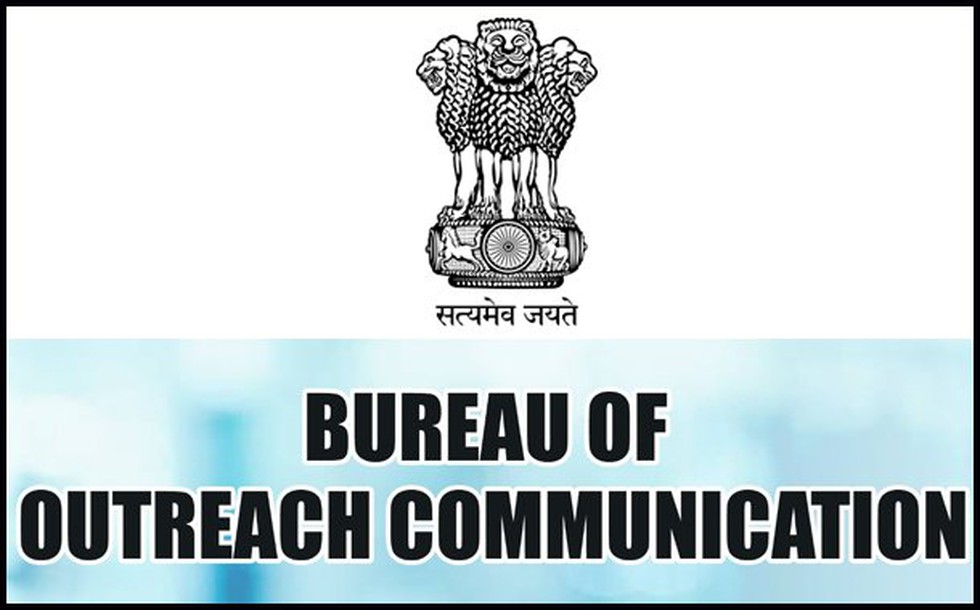
About:
- Mandate: The Bureau of Outreach and Communication (BOC) is the nodal agency of the Government of India for advertising by various Ministries and organisations of Government of India, including public sector undertakings and autonomous bodies.
- Established in: 1955.
- HQ: New Delhi.
- BOC comprises three erstwhile media units of Ministry of I&B, viz namely Directorate of Advertising & Visual Publicity (DAVP), Directorate of Field Publicity (DFP) and Song & Drama Division(S&DD), all involved in interpersonal communication.
Recent decision:
- The revision would lead to an increase in rates of around 11 per cent over the rates of 2017 in respect of most of the private TV channels. It could be of higher percentage for some others, as per their reach and TV ratings.
- Differential rate structures for news and non-news channels will be offered, depending upon their overall reach in the country.
- The decision will also make it easier for TV channels to be empanelled with BOC to take advantage of the higher rates.
Prelims Pointers
Jan. 26, 2019

About:
- Guaido's announcement came amid violence that has killed at least 13 people this week.
- The United States, Brazil and other countries endorsed Guaido's declaration in repudiation of President Nicolas Maduro, as more protests rocked the economically strapped country. Following this, Venezuela has broken off diplomatic ties with the United States.
- Background:
- Maduro has presided over a deepening economic crisis that has left millions in poverty as the oil-rich country faces shortages of basic necessities such as food and medicine.
- Some 2.3 million people have fled the country since 2015, according to the United Nations, while the International Monetary Fund says inflation will hit a staggering 10 million percent this year.
- Maduro has presided over a deepening economic crisis that has left millions in poverty as the oil-rich country faces shortages of basic necessities such as food and medicine.
Prelims Pointers
Jan. 26, 2019

About:
- UDAN is an acronym for “Ude Desh Ka Aam Nagrik”.
- It is a Regional Air Connectivity Scheme (RCS) which attempts to connect smaller towns with bigger cities to develop the regional aviation market.
- The scheme UDAN envisages providing connectivity to un-served and under-served airports of the country through revival of existing air-strips and airports.
- It will create affordable yet economically viable and profitable flights on regional routes so that flying becomes affordable to the common man even in small towns.
- It was officially launched in 2017.
- Under the first two phases of UDAN, airlines are already operating on 120 routes to 37 unserved and underserved airports.
UDAN Round 3:
- Under the latest round of the scheme, 73 proposals were awarded to 11 airlines that will connect a total of 39 airports. These include 16 unserved airports, 17 underserved airports and six water aerodromes.
- Key Features of UDAN 3 included –
- Inclusion of Seaplanes for connecting Water Aerodromes,
- Inclusion of Tourism Routes suggested by the Ministry of Tourism and
- Bringing in a number of routes in the North-East Region under the ambit of UDAN.
- Inclusion of Seaplanes for connecting Water Aerodromes,
Prelims Pointers
Jan. 26, 2019

Salient features of the IBC, 2016:
- The 2016 Code applies to companies and individuals.
- The Code creates time-bound processes for insolvency resolution of companies and individuals. These processes will be completed within 180 days.
- A resolution plan specifies the details of how the debt of a defaulting debtor can be restructured.
- The Code creates various institutions to facilitate resolution of insolvency. These are as follows:
- Insolvency Professionals will administer the resolution process, manage the assets of the debtor, and provide information for creditors to assist them in decision making.
- The insolvency professionals will be registered with insolvency professional agencies.
- Information utilities (IUs) will be established to collect, collate and disseminate financial information to facilitate insolvency resolution.
- Adjudicating authorities: The proceedings of the resolution process will be adjudicated by the National Companies Law Tribunal (NCLT), for companies; and Debt Recovery Tribunal (DRT), for individuals.
- Insolvency and Bankruptcy Board: It will be set up to regulate functioning of IPs, IPAs and IUs. The Board will consist of representatives of Reserve Bank of India, and the Ministries of Finance, Corporate Affairs and Law.
- Insolvency Professionals will administer the resolution process, manage the assets of the debtor, and provide information for creditors to assist them in decision making.
Recent Supreme Court Verdict: Key observations made:
- It is a code for reorganization and insolvency resolution of corporate debtors. Quick reorganization and insolvency resolution maximise value of the assets of corporate debtors and promotes entrepreneurship.
- As a legal framework, IBC will help to develop the credit markets. The economy's rightful position has been regained and the defaulters' paradise is lost by the IBC.
- It upheld the classification between the financial creditor and operational creditor in IBC as it is neither discriminatory nor arbitrary and non-violative of Article 14 of the Constitution.
- The Code consolidates disparate bankruptcy and insolvency laws of the past under one umbrella. The judgment termed these past laws as “trials which led to repeated errors”.
- The court upheld certain relaxations given to micro, small and medium enterprises (MSME) under Section 29A of the Code. This provision disqualifies certain kinds of persons from submitting a resolution plan.
Comment:
- The decision is a setback to defaulting promoters hoping for a chance to remain in control of their firms.
- Upholding of the provisions that bar the defaulting promoters from bidding is both ethical and proper.
Prelims Pointers
Jan. 26, 2019
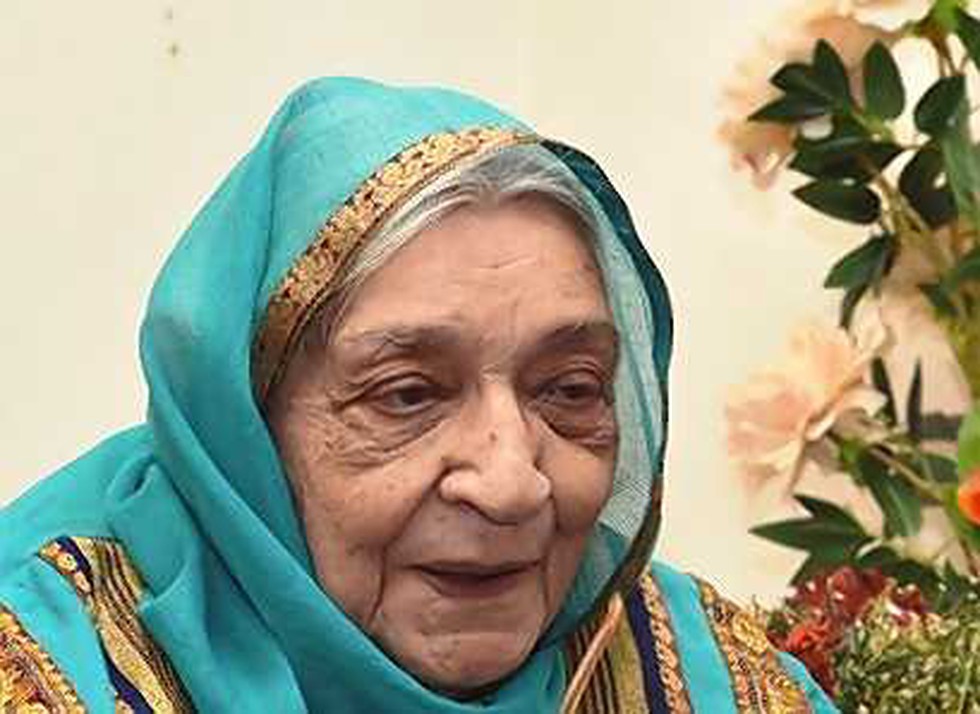
About:
- She was a renowned Hindi litterateur known for creating bold and daring characters. Her choice of subjects ranges from Partition to relationships between men and woman’s.
- Famous works: `Daar Se Bichhudi', `Mitro Marjani', and `Zindaginama'.
- Hashmat: Beginning in the 1960s, she published a series of short profiles and columns under masculine pseudonym, 'Hashmat'. These were compiled and published as Ham Hashmat in 1977.
- Awards:
- In 1980, she won the Sahitya Akademi Award in 1980 for her novel Zindaginama.
- In 1996, she was awarded the Sahitya Akademi Fellowship, the highest award of the Akademi.
- In 2010, she was offered the Padma Bhushan which she declined, stating that, "As a writer, I have to keep a distance from the establishment.”
- She had won the Sahitya Akademi Award in 1980 for her novel Zindaginama.
- She was awarded the Jnanpith in 2017 for her contribution to Indian literature.
- In 1980, she won the Sahitya Akademi Award in 1980 for her novel Zindaginama.
Jan. 25, 2019
Prelims Pointers
Jan. 25, 2019
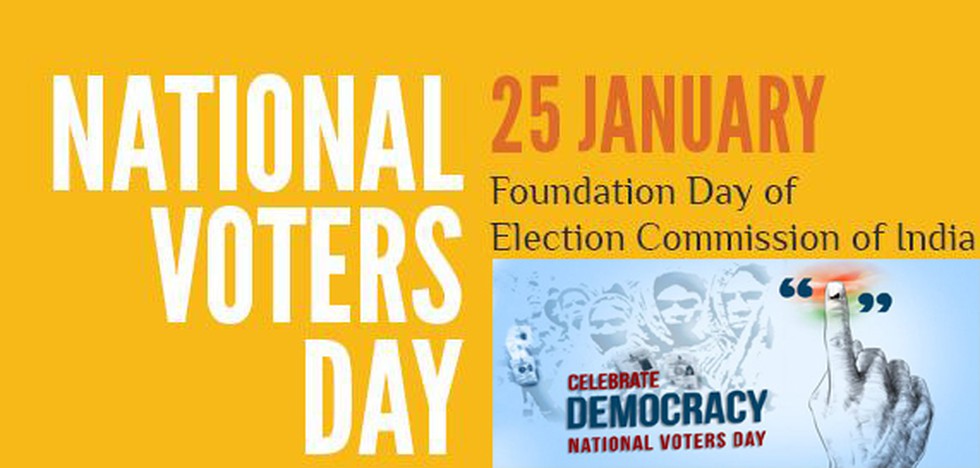
About:
- Date of celebration: January 25 (to mark the Foundation day of Election Commission of India, which was established on 25th January 1950).
- Background: It is celebrated every year since 2011.
- Objective: To encourage, facilitate and maximize the enrolment, especially for the new voters; To spread awareness among voters for promoting informed participation in the elections.
- Key highlights of 9th National Voters’ Day:
- This years’ theme is “No Voter to be Left Behind”.
- My Vote Matters, a Quarterly Magazine of Election Commission of India (ECI) will be launched on the occasion.
- The National Awards for the Best Electoral Practices will be conferred on Officers for their outstanding performance in the conduct of elections.
- This years’ theme is “No Voter to be Left Behind”.
Prelims Pointers
Jan. 25, 2019
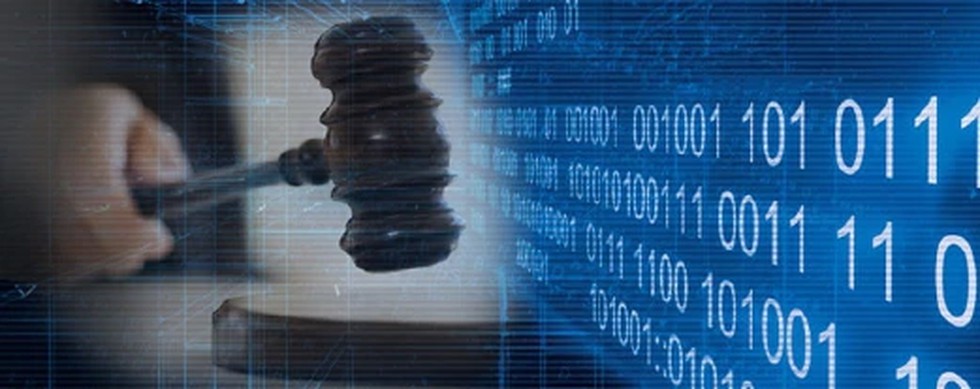
About:
- The eCourts Mission Mode Project (Phase I 2010-15; Phase II 2015-19) is a national e-Governance project for ICT enablement of district and subordinate courts of the country.
- It is being implemented by the Department of Justice, Union Ministry of Law and Justice, with a total outlay of 1670 crores (Phase II).
- The project would function in line with the Digital India program of the Government of India.
- The major objectives of the Project are:
- to make whole judicial system ICT enabled by putting in place adequate and modern hardware and connectivity;
- electronic movement of records from taluka/trial to appeal courts;
- installation of video conferencing (VC) facility and recording of witness through Video Conferencing;
- connecting all courts in the country to the National Judicial Data Grid (NJDG) through WAN and additional redundant connectivity;
- to make whole judicial system ICT enabled by putting in place adequate and modern hardware and connectivity;
- Specific targets set under the Project include:
- computerization of all the courts (around 20400) and DLSA and TLSC;
- WAN and cloud connectivity in 3500 court complexes;
- full Installation and use of Video Conferencing facility at 3000 Court Complexes and 1150 prisons;
- charting out key identified citizen services like electronic filing, daily orders, delivery of decrees, online case status in all the district courts etc.
- computerization of all the courts (around 20400) and DLSA and TLSC;
Recent decision:
- Court case information such as judicial proceedings/decisions, case registration, cause list, case status, daily orders, and final judgments of all computerized district and subordinate courts of the country will now be available across all CSCs in the country.
- The rural reach of the CSC's is extensive, envisaging a minimum of one CSC in each Gram Panchayat, thus enabling eCourts services to reach all corners of the country.
- To ensure affordability, Department of Justice has decided not to charge any fee from the customers for eCourts related services delivered through CSC's.
- Common Service Centres (CSCs) are the access points for delivery of various electronic services to villages in India.
- CSC programme is an initiative of the Ministry of Electronics & IT (MeitY), Government of India.
- The CSC project, which formed a strategic component of the National e-Governance Plan was approved in 2006. The Government of India launched the CSC 2.0 scheme in 2015 to expand the outreach of CSCs to all Gram Panchayats across the country by 2019.
Prelims Pointers
Jan. 25, 2019
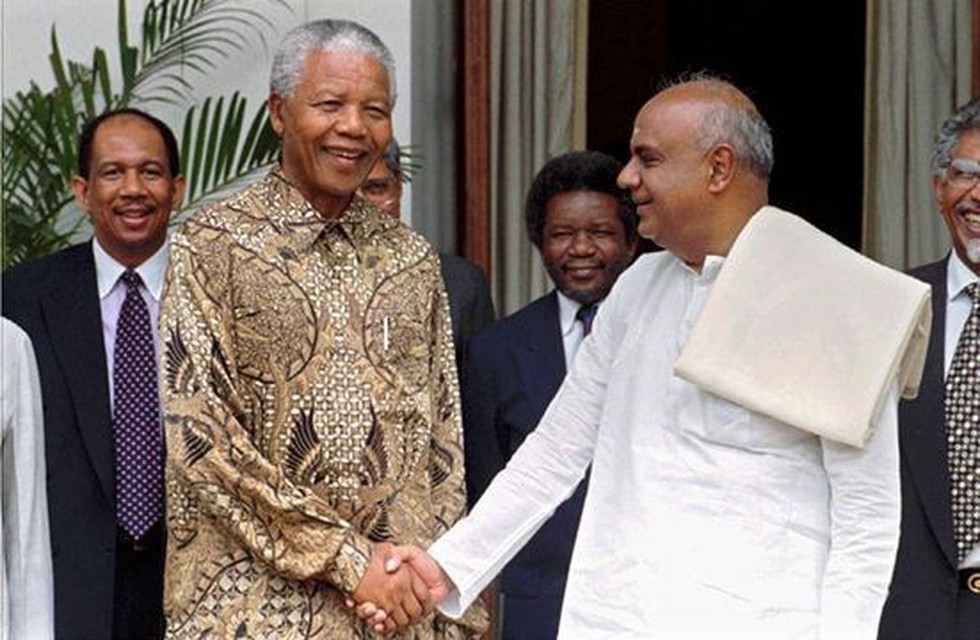
About:
- The Strategic Partnership between India and South Africa, called the RED FORT DECLARATION, was signed in 1997 by the then South African President Nelson Mandela and former PM H.D. Deve Gowda.
- Officials said all aspects the partnership would be reviewed and updated with a three-year plan of action on security cooperation, trade and investment, tourism, harnessing the ‘blue economy’, maritime cooperation, agriculture, science and technology projects.
- Defence deals:
- The two sides are also expected to explore new defence deals in the backdrop of the lifting of a 13-year old ban on South African defence firm Denel that was barred from doing business in India since 2005.
- Denel was finally removed from the blacklist in September 2018 the Supreme Court subsequently dismissed corruption charges against the company.
- The two sides are also expected to explore new defence deals in the backdrop of the lifting of a 13-year old ban on South African defence firm Denel that was barred from doing business in India since 2005.
- During his visit, Mr. Ramaphosa will also deliver the “First IBSA Gandhi Mandela Memorial Freedom Lecture”, instituted by the Indian Council of World Affairs in Delhi.
Prelims Pointers
Jan. 25, 2019
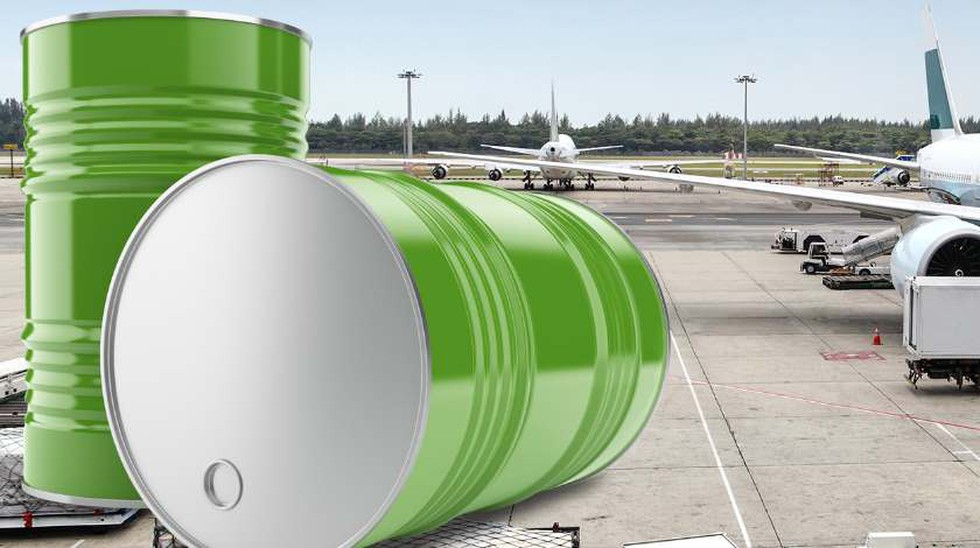
About:
- To use bio-jet fuel on all military and civilian aircraft, BIS has in collaboration with IAF, research organisations and the industry brought out a new standard for Aviation Turbine Fuels.
- An Indian Standard IS 17081:2019 Aviation Turbine Fuel (Kerosene Type, Jet A-1) containing Synthesised Hydrocarbons, has been formulated.
- Significance:
- This standard would enable the oil companies to manufacture bio-jet fuel for the Indian aviation industry.
- These specifications will align Indian standards with current international standards.
- Given the advent of Carbon Offsetting and Reduction Scheme for International Aviation (CORSIA) by the International Civil Aviation Organisation (ICAO) by 2027, this is a significant development.
- This standard would enable the oil companies to manufacture bio-jet fuel for the Indian aviation industry.
Biojet fuel?
- The project is a combined effort of IAF, DRDO, Directorate General Aeronautical Quality Assurance (DGAQA) and CSIR-Indian Institute of Petroleum.
- This fuel is made from Jatropha oil sourced from Chattisgarh Biodiesel Development Authority (CBDA) and then processed at CSIR-IIP, Dehradun.
- IAF intends to fly the An-32 transport aircraft using 10% biojet fuel on 26 January 2019, in the Republic Day flypast.
- Promoting biojet fuels has the dual benefit of reducing the carbon footprint as well as usage of fossil fuels.
Prelims Pointers
Jan. 25, 2019
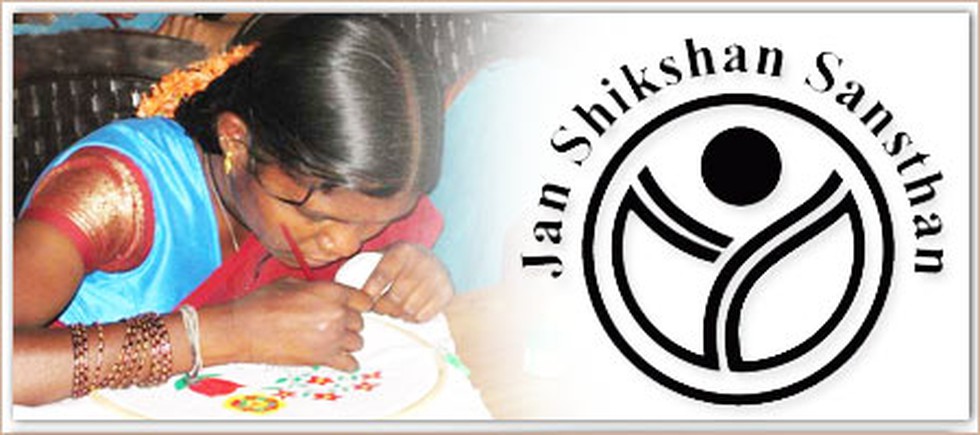
Release of New Guidelines:
New guidelines were released for JSSs. Key highlights of the guidelines are –
- Alignment of JSS course and curriculum to National Skill Qualification Framework (NSQF) to standardize training.
- Decentralization of powers for JSSs- giving more accountability and independence to district administration.
- Linking JSS to PFMS (Public Finance Management system) maintaining transparency and accountability of the ecosystem.
- Training of Trainers to develop the capacity through NSTIs (National Skills Training Institutes).
Blended Training System:
- Today’s conference also saw the pilot launch of Amrita University’s Blended Training System at Jan Shikshan Sansthans (JSSs) with e-content entailing selected skill courses.
- The Blended Training System is a comprehensive ICT -based platform that provides numerous benefits for trainees and trainers.
Additional Announcement: MoU with NACER
- MSDE and National Skill Development Corporation (NSDC) signed a MoU with National Centre for Excellence of RSETIs (NACER), the apex body for Rural Self Employment Training Institutes (RSETIs) under Ministry of Rural Development (MoRD).
- The objective of this collaboration is to provide skilled PMKVY candidates from PMKKs for the 10-day residential Entrepreneurship Development Program (EDP) at RSETIs.
Jan Shikshan Sansthan?
- Currently, there are 247 JSSs working across the country imparting vocational skill training programmes and entrepreneurship benefits accessible to the underprivileged such as neo-literates, semi-literates, SCs, STs, women and girls, slum dwellers, migrant workers.
- Formerly under the Ministry of Human Resources Development, Jan Shikshan Sansthan has been transferred to the Ministry of Skill Development & Entrepreneurship in 2018.
Prelims Pointers
Jan. 25, 2019
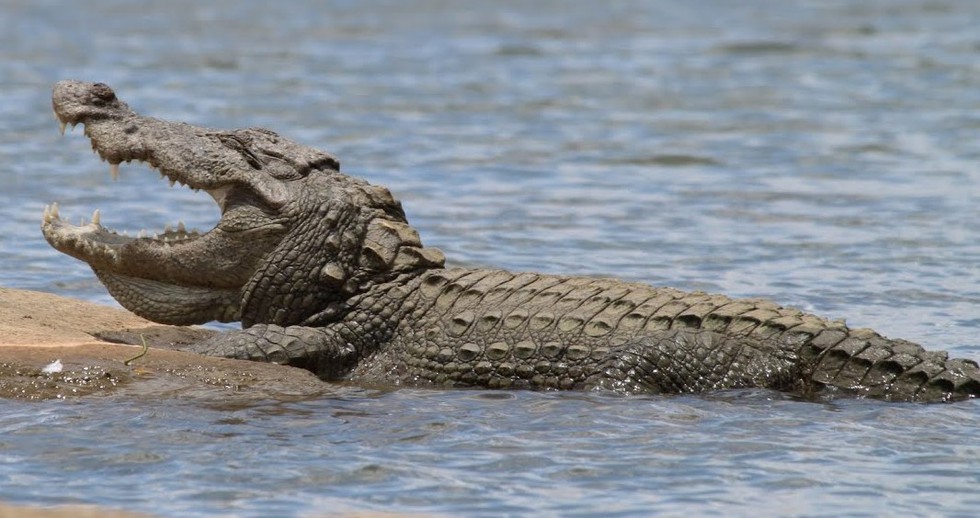
About:
- Scientific name: Crocodylus palustris.
- Common name: Mugger crocodile, Marsh crocodile or Broad-snouted crocodile.
- Distribution:
- It is a species native to freshwater habitats from southern Iran and Pakistan to the Indian subcontinent and Sri Lanka.
- Vadodara, 90 km from the Narmada dam, is the only city in the country where crocodiles live in their natural habitat amidst human population.
- It is a species native to freshwater habitats from southern Iran and Pakistan to the Indian subcontinent and Sri Lanka.
- Habitat:
- This species is found in freshwater lakes, ponds, and marshes. it has also adapted well to reservoirs, irrigation canals, human-made ponds, and coastal saltwater lagoons.
- The mugger likes relatively shallow water, avoids fast-flowing rivers and is known to bury itself into mud to escape the searing heat of India during the dry season.
- This species is found in freshwater lakes, ponds, and marshes. it has also adapted well to reservoirs, irrigation canals, human-made ponds, and coastal saltwater lagoons.
- Status:
- Already extinct in Bhutan and Myanmar, the mugger has been listed as vulnerable on the IUCN Red List.
- In India, it is protected under Schedule I of the Wildlife Protection Act, 1972.
- It is listed in CITES Appendix I, hence export of wild-caught specimen is banned.
- Already extinct in Bhutan and Myanmar, the mugger has been listed as vulnerable on the IUCN Red List.
- Cultural Significance: In idols of the Narmada Goddess, a crocodile is her vehicle. Goddess Khodiyar Maa, who is worshipped by a section of Gujaratis, is also seen riding a crocodile as a symbol of her supremacy over land and water.
It is one of three crocodilians in India, apart from saltwater crocodile (C. porosus) and gharial (Gavialis gangeticus).
Prelims Pointers
Jan. 25, 2019
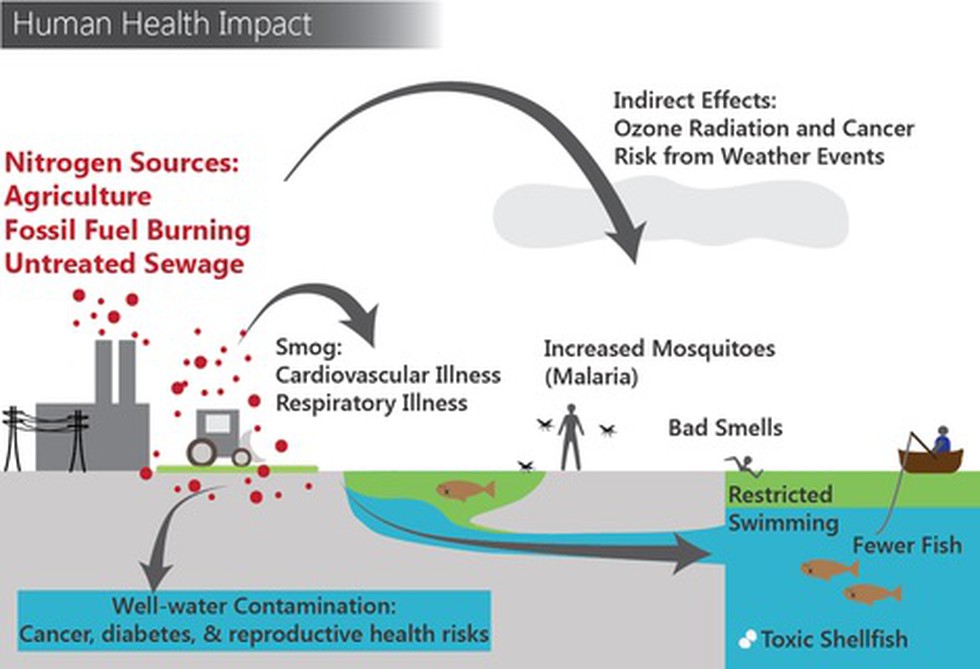
About:
- Eighteen research institutions in India are among a group of 50 institutions — called the South Asian Nitrogen Hub (SANH) — in the United Kingdom and South Asia.
- The group has secured £20 million (about ₹200 crore) from the U.K. government to assess and study the quantum and impact of “nitrogen pollution” in South Asia.
- The SANH will study the impacts of the different forms of pollution to form a “coherent picture” of the nitrogen cycle.
- In particular, it will look at nitrogen in agriculture in eight countries — India, Pakistan, Bangladesh, Nepal, Afghanistan, Sri Lanka, Bhutan and Maldives.
Nitrogen pollution:
- Cause:
- While nitrogen is the dominant gas in the atmosphere, it is inert and doesn’t react. However, when it is released as part of compounds from agriculture, sewage and biological waste, nitrogen is considered “reactive”, and it may be polluting.
- Nitrogen pollution is caused by emissions from chemical fertilisers, livestock manure and burning fossil fuels.
- Impact:
- Nitrous oxide (N2O) is 300 times more potent than carbon dioxide and even exert a potent greenhouse gas (heat trapping) effect.
- Gases such as ammonia (NH3) and nitrogen dioxide (NO2) contribute to poor air quality and can aggravate respiratory and heart conditions, leading to millions of premature deaths across the world.
- Other than air pollution, nitrogen is also linked to the loss of biodiversity, the pollution of rivers and seas, ozone depletion, health, economy, and livelihoods.
- Nitrate from chemical fertilisers, manure and industry pollutes the rivers and seas, posing a health risk for humans, fish, coral and plant life.
- Indian scenario:
- Last year, a consortium of researchers assessed trends in nitrogen emissions in India.
- It found that NOx emissions grew at 52% from 1991 to 2001 and 69% from 2001 to 2011.
- Though agriculture remained the largest contributor to nitrogen emissions, non-agricultural emissions of nitrogen oxides and nitrous oxide were growing rapidly, with sewage and fossil-fuel burning — for power, transport and industry — leading the trend.
Prelims Pointers
Jan. 25, 2019
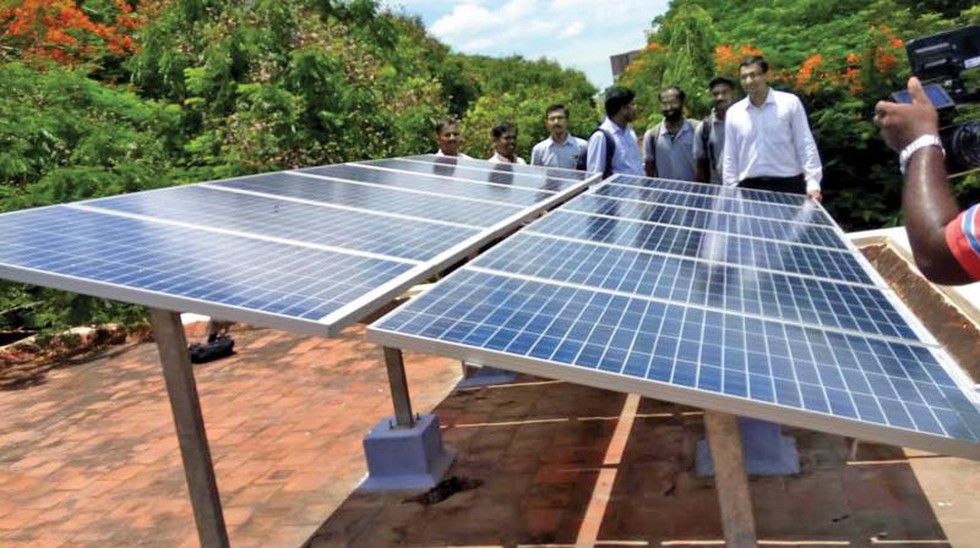
About:
Union Minister for Science & Technology will be launching following three important centre’s set up by Department of Science and Technology (DST), located at Indian Institute of Technology, Madras (IITM) on 25th January 2019.
- DST –IITM Solar Energy Harnessing Centre: It will focus on a wide range of R&D activities such as silicon solar cells that promise high efficiency. The network of researchers engaged in centre comprise of scientists from IIT Madras, IIT-Guwahati, Anna University, ICT-Mumbai etc.
- DST-IITM Water –IC for SUTRAM of EASY WATER:
- Its full form is “DST- IITM Water Innovation Centre for Sustainable Treatment, Reuse and Management for Efficient, Affordable and Synergistic Solutions”.
- Its objective is to undertake synchronized research and training programs on various issues related to wastewater management, water treatment, sensor development, storm water management and distribution and collection systems.
- Its full form is “DST- IITM Water Innovation Centre for Sustainable Treatment, Reuse and Management for Efficient, Affordable and Synergistic Solutions”.
- Test bed on Solar thermal desalination solutions: These are being established by IIT Madras in Naripaaiyur, Ramanathapuram District, Tamil Nadu with to address prevalent water challenges in the arid coastal village located on the shores of the Bay of Bengal.
Prelims Pointers
Jan. 25, 2019
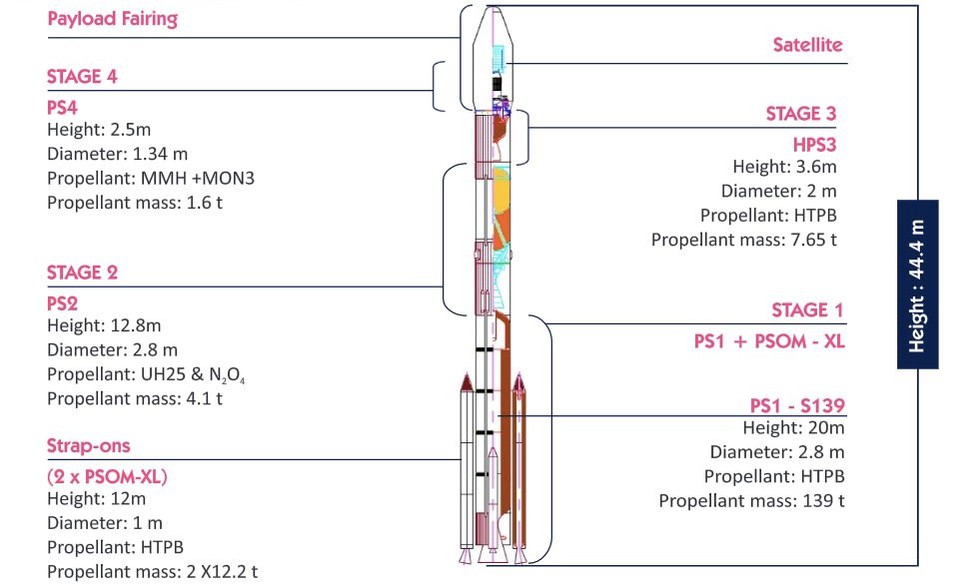
About:
- Microsat-R: Microsat-R, an imaging satellite weighing 740-kg, is meant for military purposes, but the ISRO did not give any details about it.
- Kalamsat:
- Kalamsat is an experimental satellite for studying the communication system of nano satellites, which can be useful in many fields, predominantly disaster management.
- It is contributed by college students and the members of a Chennai-based organisation -- Space Kidz India.
- Kalamsat was the lightest ever satellite to be launched by India (It is a ten cm cube weighing one kilogram).
- Kalamsat is an experimental satellite for studying the communication system of nano satellites, which can be useful in many fields, predominantly disaster management.
Key significant events:
- The PSLV-C44 was the first mission of a new variant of the PSLV, called the PSLV-DL, as it was equipped with two strap-on configurations. Usually, PSLVs were launched without any strap-ons (boosters) or were equipped with six strap-ons fixed around the rocket.
- Kalamsat is the first to use PS4 (the fourth stage of the vehicle) as a platform to orbit around the earth. With this launch, India became the first country to use the fourth stage of a space rocket as an orbital platform for micro-gravity experiments.
- For the first time, the ISRO placed a satellite -- Microsat-R -- in a lower orbit, at around 274 kms from earth.
Prelims Pointers
Jan. 25, 2019
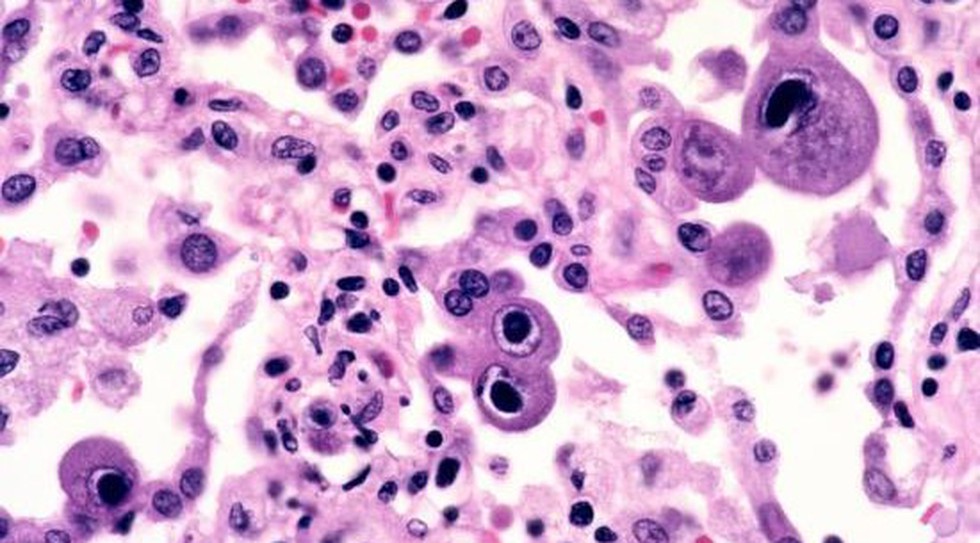
About:
- Cytomegalovirus (CMV) is a type of virus, similar to the herpes virus that causes cold sores and chickenpox.
- CMV is usually considered harmless. Once one gets the virus, the immune system usually controls the virus and most people don't realise they have it. However, sometimes it causes problems in babies if one catches it during pregnancy (congenital CMV).
- Humans and monkeys serve as natural hosts. CMV is mainly spread through close contact with someone who already has CMV.
Recent development:
- At the Oregon Health and Science University, scientists tested the new vaccine using a cytomegalovirus-based platform on infected rhesus macaques, and found that this platform can create and keep immunity for life against the malaria-causing parasite.
- How is it different from Mosquirix?
- The WHO is using one malaria vaccine (RTS, S/AS01, brand name Mosquirix) in three African countries, but its effectiveness has been limited.
- Most vaccines are designed to encourage the human body to respond to disease-causing pathogens by creating antibodies that disable those pathogens.
- The new vaccine takes a different approach. It uses a weakened form of a common herpes virus — a CMV — that infects most people without causing disease. The scientists weave tiny bits of their target pathogen into the CMV.
- Those who receive the vaccine produce memory T-cells that can search for and destroy pathogen-infected cells.
- The WHO is using one malaria vaccine (RTS, S/AS01, brand name Mosquirix) in three African countries, but its effectiveness has been limited.
- Malaria is caused by Plasmodium parasites, which are spread to humans through mosquito bites.
- It can cause high fevers, shaking chills, flu-like illness and, in the worst cases, death.
- Worldwide, 216 million people were infected with malaria in 2016, leading to 445,000 deaths. Most infections occur in Africa and Asia.
Jan. 24, 2019
Prelims Pointers
Jan. 24, 2019
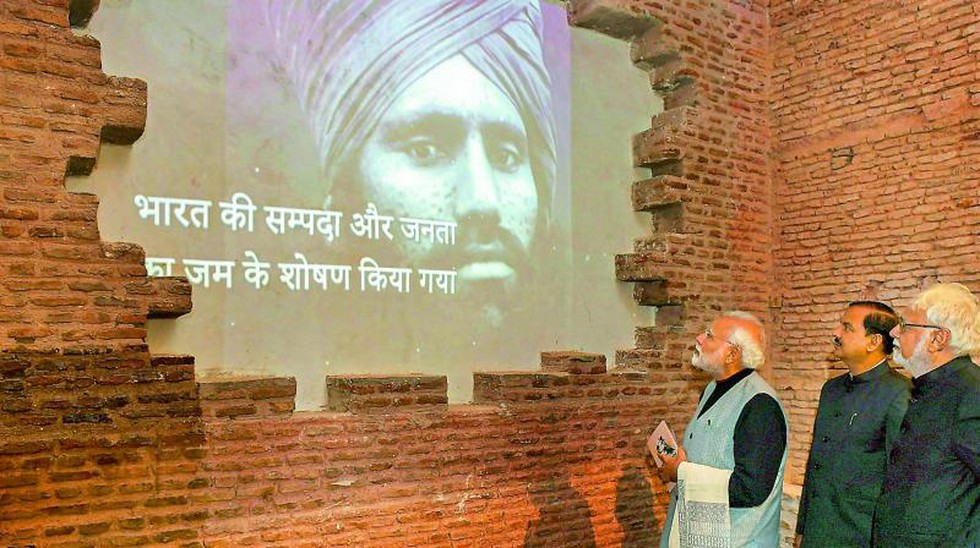
About:
- Prime Minister Modi inaugurated the following four museums within the Red Fort complex –
- Subhash Chandra Bose museum: To provide a detailed account on Netaji Subhash Chandra Bose and the history of Indian National Army (INA).
- Yaad-e-Jallian Museum: IT shows the history of Jallianwala Bagh massacre of 1919 and sacrifices made by Indian soldiers during World War-1.
- Museum on 1857- India's first war of Independence.
- Drishyakala-Museum on Indian Art and culture: works of eminent Indian artists like Raja Ravi Varma, Gurudev Tagore, Amrita Sher-Gil are on display at the exhibition.
- Subhash Chandra Bose museum: To provide a detailed account on Netaji Subhash Chandra Bose and the history of Indian National Army (INA).
- The entire complex of museums will be known as Kranti Mandir as a tribute to the revolutionary zeal and courage of the great freedom fighters. Museums on Netaji and Azad Hind Fauj are a key part of Kranti Mandir.
Prelims Pointers
Jan. 24, 2019
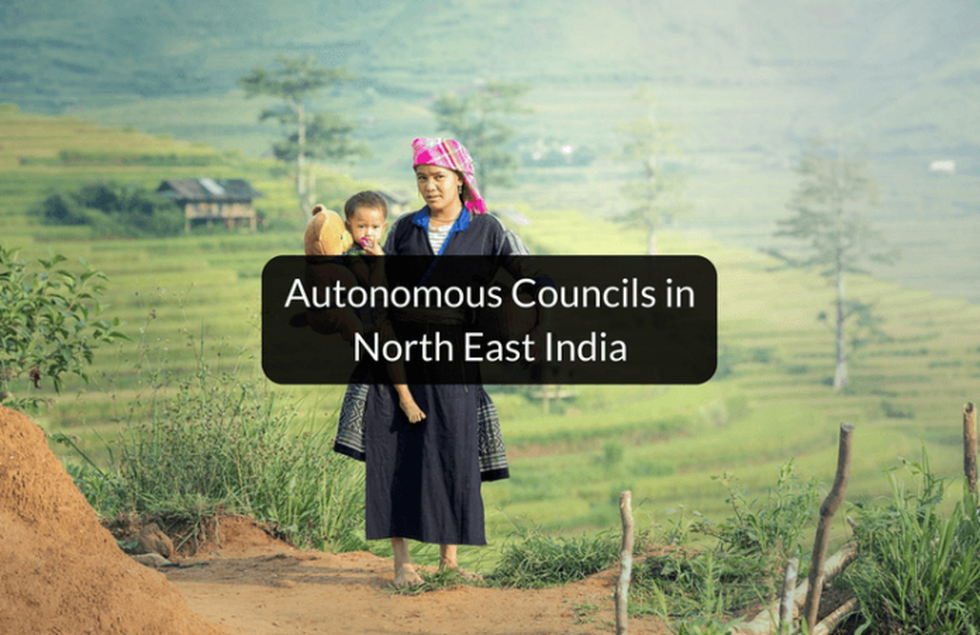
Key highlights of recent decision:
- State Finance Commissions will be set up in Assam, Meghalaya, Mizoram, Tripura, Karbi Anglong Autonomous Territorial Council and Dima Hasao Autonomous Territorial Council.
- Finance Commission will recommend devolution of financial resources to ten Autonomous District Councils of Assam, Meghalaya, Mizoram and Tripura, and village and municipal councils in Sixth Schedule areas for development works in these tribal areas.
- Elections:
- The State Election Commissions will hold elections to Autonomous Councils, village and municipal councils in the scheduled areas of Assam, Mizoram and Tripura.
- One-third of seats will be reserved for women in the village and municipal councils. At least two nominated members in all autonomous councils will be women.
- The proposed amendments will have elected village and municipal councils, ensuring grass roots democracy.
- The State Election Commissions will hold elections to Autonomous Councils, village and municipal councils in the scheduled areas of Assam, Mizoram and Tripura.
- The amendment also proposes to rename the existing autonomous district councils as autonomous territorial councils because the jurisdiction of the councils extends to more than one district.
- It also provides for transfer of additional 30 subjects, including departments of Public Works, Forests, Health and Family Welfare to Karbi Anglong Autonomous Territorial Council and Dima Hasao Autonomous Territorial Council in Assam.
- Sixth Schedule contains Provisions as to the Administration of Tribal Areas in the States of Assam, Meghalaya, Tripura and Mizoram.
- The Sixth Schedule of the Constitution provides for decentralised self-governance and dispute resolution through local customary laws in parts of the North East, mainly tribal areas.
- According to it, there shall be a District Council for each autonomous district consisting of not more than thirty members, of whom not more than four persons shall be nominated by the Governor and the rest shall be elected on the basis of adult suffrage.
Prelims Pointers
Jan. 24, 2019
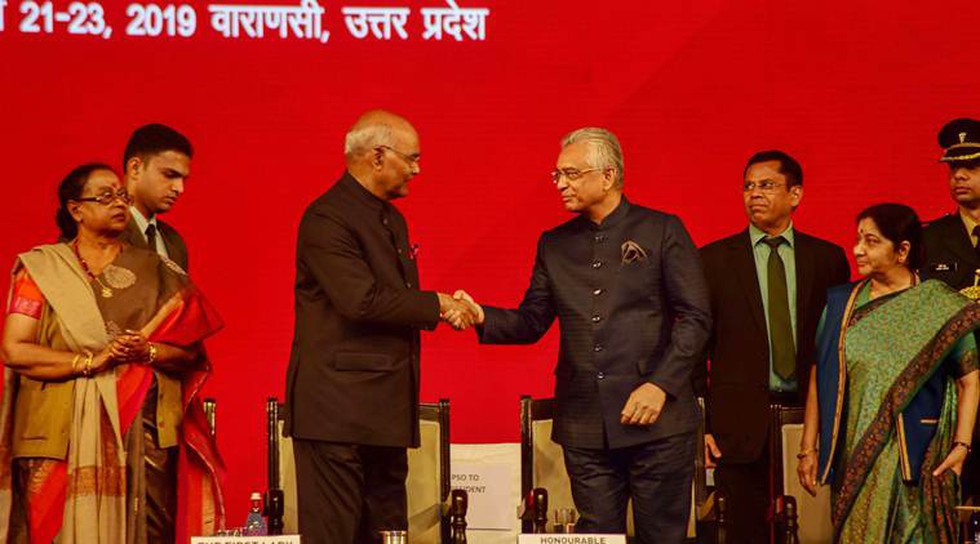
About:
- Pravasi Bharatiya Samman Award is the highest honour conferred by the President of India as a part of the Pravasi Bharatiya Divas (PBD) Conventions.
- Eligibility: it is conferred on a Non-Resident Indian (NRI), Person of Indian Origin (PIOs) or organization or institution established and run by NRIs or PIOs, who have made significant contribution in one of the following fields:
- Better understanding abroad of India; Support to India’s causes and concerns in a tangible way;
- Building closer links between India, the overseas Indian community and their country of residence;
- Social and humanitarian causes in India or abroad; or
- Eminence in one’s field or outstanding work, which has enhanced India’s prestige in the country of residence.
- Better understanding abroad of India; Support to India’s causes and concerns in a tangible way;
- Posthumous: The Awards shall not be given posthumously except in very rare cases where the person had died within a year preceding the announcement of the Awards.
- Number of awardees: Every year since 2003 till 2015, 15 PBSAs were awarded during the Pravasi Bharatiya Divas (PBD) Convention. Since 2015, PBD Convention is being held Bi-annually and the number of PBSAs have been increased to 30.
- Jury-cum-Awards-Committee: The winners are selected by the Jury-cum-Awards-Committee comprising Vice President of India as Chairman and Minister of External Affairs as Vice-Chairman.
- Award: The Award shall carry a bilingual Sanad in addition to a citation, a gold medallion and a miniature of the medallion in the form of a lapel pin.
List of prominent awardees (2019):
- Gita Gopinath, IMF chief economist.
- Nihal Singh Agar, founding president of VHP in Australia between 1990-2005.
- Ramesh Chotai, former president of Hindu Mandir and Cultural Centre in Canada.
- Swami Saradaprabhananda, president, Ramakrishna Centre of South Africa (Phoenix).
- Himanshu Gulati, a Member of Parliament in Norway, and Shamim Parkar Khan of the UAE were honoured for public service.
- Veteran South African diplomat Anil Sookal was conferred the award in the field of diplomacy.
- Two organisations — Indian Community Association of Egypt and Guyana Hindu Dharmic Sabha — got the award for community service.
Prelims Pointers
Jan. 24, 2019
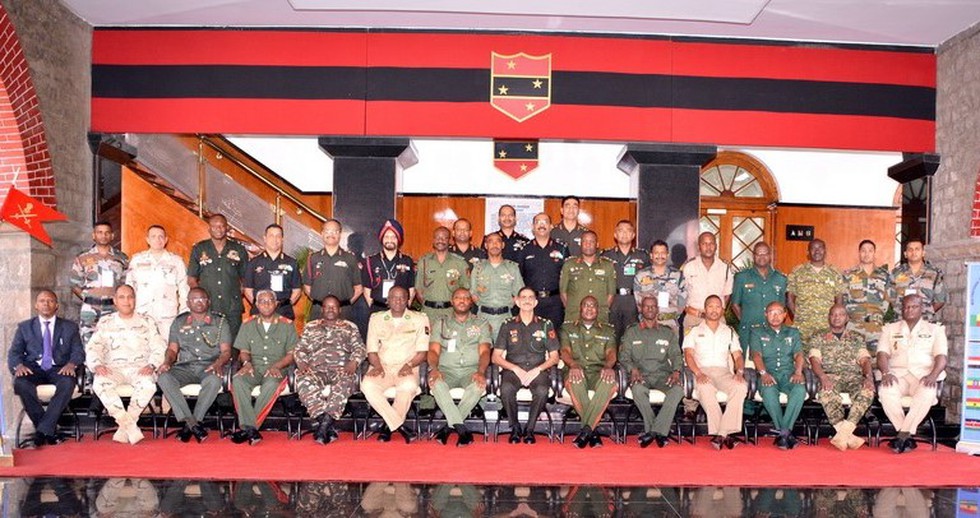
About:
- Full name: IAFTX is an acronym for Indian Africa Field Training Exercise.
- Date and venue: IAFTX-2019 is scheduled to be conducted at Aundh Military Station and College of Military Engineering, Pune from 18 March to 27 March 2019.
- What is it? It is a joint training exercise being conducted with more than a dozen African countries & India.
- Objective: It aims at synergising humanitarian mine action and joint peace operations.
- Significance: The IAFTX-2019 is a positive step towards growing political and military ties with the member nations of African continent and will boost the already strong strategic cooperation between the countries.
Prelims Pointers
Jan. 24, 2019
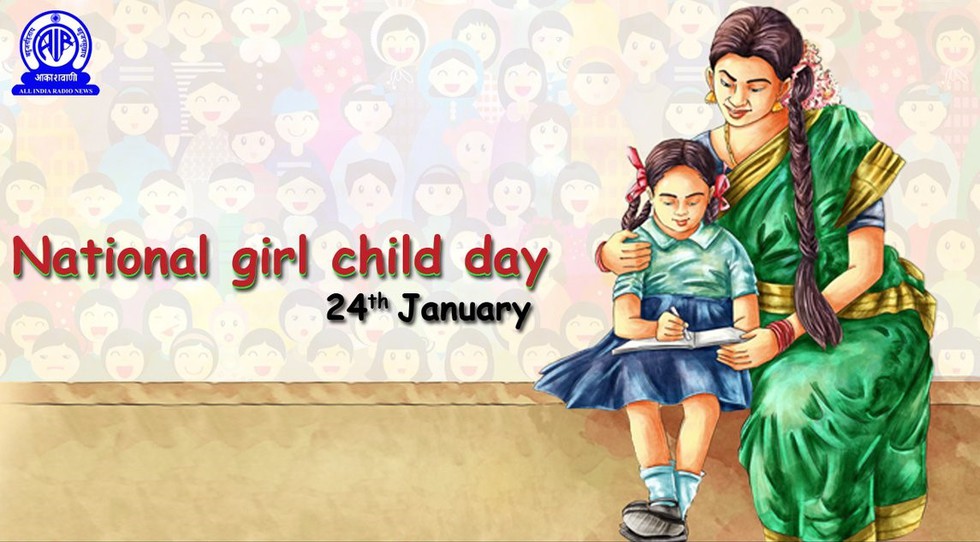
About:
- Theme of NGCD 2019: “Empowering Girls for a Brighter Tomorrow”.
- Objectives:
- To observe anniversary of Beti Bachao Beti Padhao (BBBP) Scheme Which was launched by Prime Minister Narendra Modi in January 2015 at Panipat in Haryana.
- Generating awareness on the issue of declining Child Sex Ratio (CSR) and create a positive environment around valuing the girl child.
- To observe anniversary of Beti Bachao Beti Padhao (BBBP) Scheme Which was launched by Prime Minister Narendra Modi in January 2015 at Panipat in Haryana.
Beti Bachao Beti Padhao (BBBP) Scheme:
- Objectives of the scheme: Preventing gender biased sex selective elimination to address the declining Child Sex Ratio (CSR); ensuring survival and protection of the girl child and ensuring education and participation of the girl child.
- Background: It was launched by Prime Minister on 22nd January, 2015 at Panipat in Haryana.
- Coverage: Seeing the improving trend of Sex Ratio at Birth (SRB) in 161 implementing districts, Prime Minister of India launched the All India Expansion of BBBP covering all 640 districts (as per Census 2011) at Jhunjhunu, Rajasthan on 8th March 2018.
- Bodies involved: It is a tri-ministerial effort of Ministries of Women and Child Development (WCD), Health & Family Welfare and Human Resource Development. At the Central level, Ministry of WCD is the nodal ministry for the programme.
- Funding: BBBP Scheme is a Central Sector Scheme with 100% financial assistance for District level component.
- Impact: The improving trend in Sex Ratio at Birth (SRB) by 9 points has been seen at all India level from 918 in F.Y. 2014-15 to 927 in F.Y. 2017-18 (up to January, 2018) in as per HMIS report received from MoH&FW.
Prelims Pointers
Jan. 24, 2019
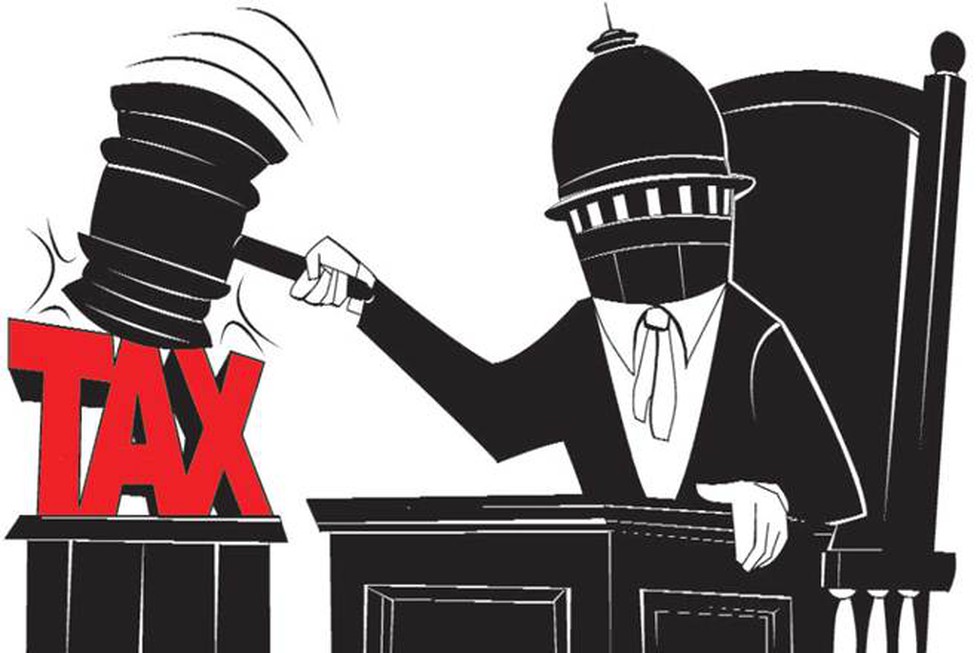
About:
- What is it? Goods and Services Tax Appellate Tribunal (GSTAT) is the forum of second appeal in GST laws and the first common forum of dispute resolution between Centre and States.
- Function: The appeals against the orders in first appeals issued by the Appellate Authorities under the Central and State GST Acts lie before the GST Appellate Tribunal, which is common under the Central as well as State GST Acts.
- Location: The National Bench of the Appellate Tribunal shall be situated at New Delhi.
- Composition: GSTAT shall be presided over by its President and shall consist of one Technical Member (Centre) and one Technical Member (State).
- Significance:
- The national bench of the GST Appellate Tribunal will expedite resolution of disputes under GST laws. Tax experts said the formation will help prevent any unwarranted delays in the future.
- Being a common forum, GST Appellate Tribunal (national bench) will ensure that there is uniformity in redressal of disputes arising under GST, and therefore, in implementation of GST across the country.
- The appellate authority will help in resolving the confusion created by contradictory rulings given by Appellate Authority for Advance Rulings (AAAR) on the same or similar issues in different states.
- The national bench of the GST Appellate Tribunal will expedite resolution of disputes under GST laws. Tax experts said the formation will help prevent any unwarranted delays in the future.
- Background:
- Chapter XVIII of the CGST Act provides for the Appeal and Review Mechanism for dispute resolution under the GST Regime.
- Section 109 of this Chapter under CGST Act empowers the Central Government to constitute the Goods and Services Tax Appellate Tribunal for hearing appeals against the orders passed by the Appellate Authority or the Revisional Authority.
- Chapter XVIII of the CGST Act provides for the Appeal and Review Mechanism for dispute resolution under the GST Regime.
Prelims Pointers
Jan. 24, 2019
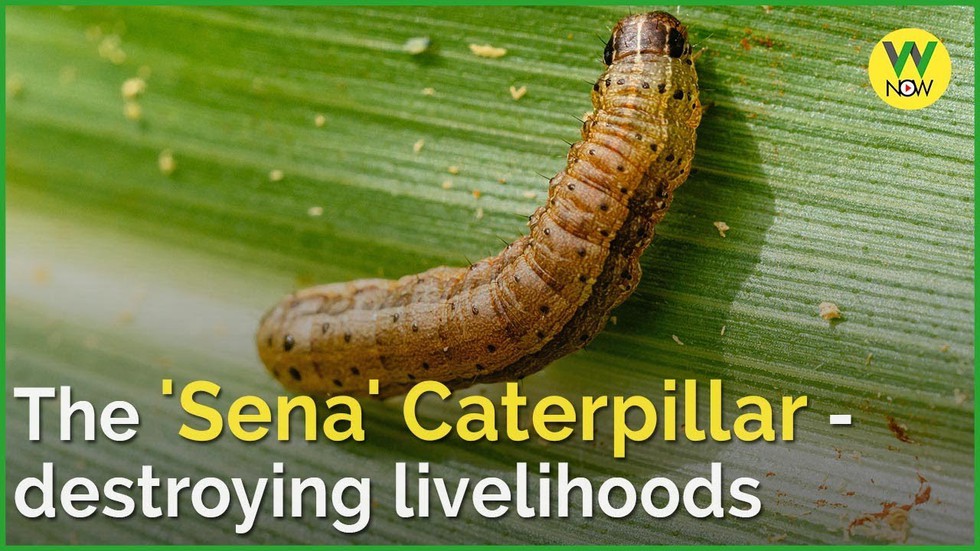
About:
- Scientific name: Spodoptera frugiperda.
- Common name: Fall Armyworm; Sena Caterpillar.
- Distribution:
- It is an insect native to tropical and subtropical regions of the Americas.
- It was first detected in Central and Western Africa in 2016. However, because of trade and the moth’s strong flying ability, it has spread to 44 African countries.
- Indian scenario: It was first detected in Karnataka in May 2018, making it the first reported finding of the pest in Asia. It has been reported to have spread as far as West Bengal and Gujarat.
- It is an insect native to tropical and subtropical regions of the Americas.
- Damage to crop: In its larva stage, it can cause significant damage to crops, if not well managed. It primarily affects maize, but can feed on more than 80 additional species of plants (rice, millet, sugarcane, vegetable crops and cotton).
- Control:
- It can be controlled with insecticides (like lambda-cyhalothrin), through natural predators (such as coccinellid beetles which feed on FAW) or by inter-cropping.
- Farmer in the Americas, using Sustainable management practices have been managing FAW in their crops for many centuries.
- It can be controlled with insecticides (like lambda-cyhalothrin), through natural predators (such as coccinellid beetles which feed on FAW) or by inter-cropping.
The moth can fly up to 100 km per night and the female moth can lay up to a total of 1,000 eggs in her lifetime.
Prelims Pointers
Jan. 24, 2019
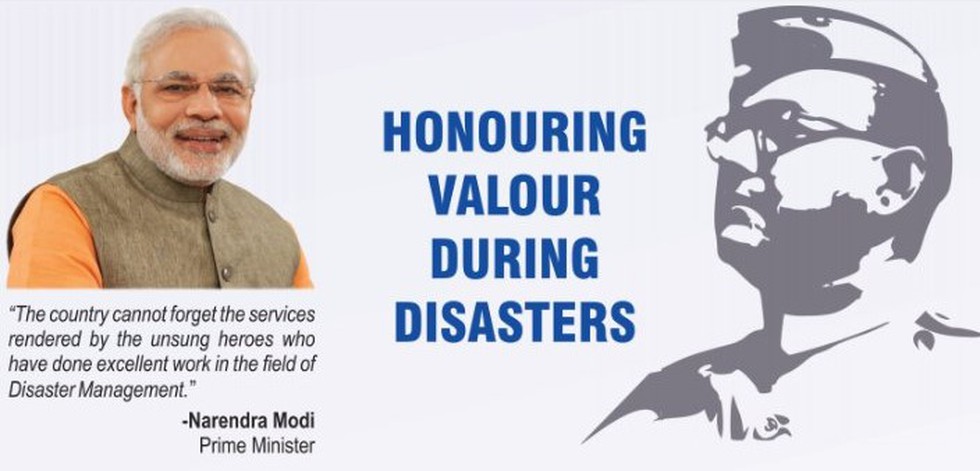
About:
- Objective: The award has been instituted to acknowledge the contribution and selfless service of organisations and individuals to humanity in the aftermath of any disaster.
- Award ceremony: It will be announced every year on 23rd January, the birth anniversary of Netaji Subhash Chandra Bose.
- Award money: The Award carries a cash prize of 51 lakh rupees.
- Eligibility: All Indian Citizens and organizations, who have excelled in areas of Disaster Management (Prevention, Mitigation, Relief or Early Warning) are eligible for the award.
- Winner of 2019: This year, 8th Battalion of National Disaster Response Force (NDRF) located at Ghaziabad has been selected for the Award for its commendable work in disaster management.
Prelims Pointers
Jan. 24, 2019
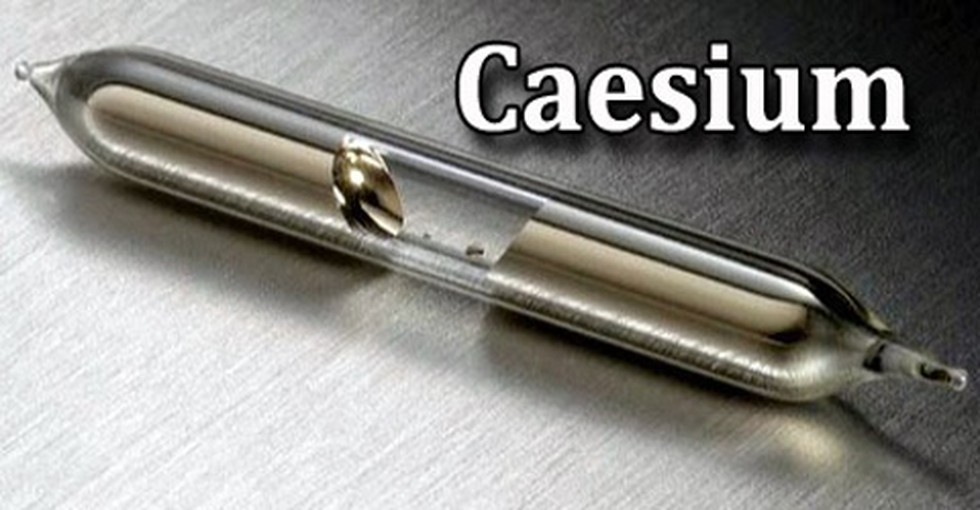
About:
- Caesium-137 (atomic mass 137) is a heavier, radioactive isotope of Caesium (Cs) whose most stable form is Cs-133.
- Production: Cs-137 is most commonly produced as a by-product in fission reactions of uranium and plutonium in nuclear plants or nuclear explosions. It is, thus, part of the spent fuel.
- Properties:
- Silvery white, soft, and malleable, Cs-137 is one of the very few metals that exist in liquid form at room temperature.
- Cs-137 has a half-life of about 30 years. It decays through the emission of beta particles and gamma rays.
- Silvery white, soft, and malleable, Cs-137 is one of the very few metals that exist in liquid form at room temperature.
- Application: Cs-137 is used in a variety of measuring instruments in the construction and other industry. It is also used, as in ONGC’s case, in well-logging devices in the drilling industry for the characterisation of rocks.
- Health effects: Very high exposure — an extremely rare occurrence — can result in an increased risk of cancer.
Prelims Pointers
Jan. 24, 2019
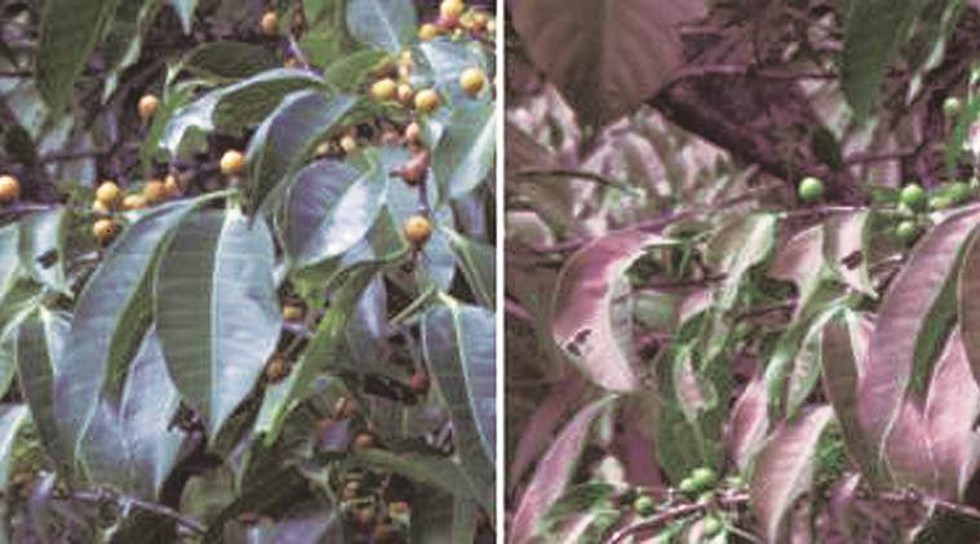
About:
- In the combined image above, the photograph on the left show’s leaves in the colours that a human observer would see them. The photograph on the right, taken by a special camera, shows the same leaves in the colours that a bird would see them.
- As the images show, birds see a very different reality compared to what humans see.
- Human colour vision is based on the RGB combination — red, green and blue.
- Birds’ colour vision is based on four colours — the RGB combination and also ultraviolet.
- Human colour vision is based on the RGB combination — red, green and blue.
- Birds see contrasts in dense forest foliage, whereas people only see a wall of green.
- For birds, the upper sides of leaves appear much lighter in ultraviolet. From below, the leaves are very dark. In this way the three-dimensional structure of dense foliage is obvious to birds. This in turn makes it easy for them to move, find food and navigate.
- People, on the other hand, see the foliage in green.
- For birds, the upper sides of leaves appear much lighter in ultraviolet. From below, the leaves are very dark. In this way the three-dimensional structure of dense foliage is obvious to birds. This in turn makes it easy for them to move, find food and navigate.
- The camera was designed by scientists from Lund University in Sweden, who have published their findings in Nature Communications.

